This Week At Angama #86
27 September 2019 | This Week at Angama | Adam Bannister

Drama unfolds on a daily basis in the Mara, but never more so than when the zebra start to congregate at the infamous crocodile-infested crossing known as ‘Cul-de-sac’. It is at this exact site that I have had a number of extremely dramatic sightings this migration season. Regardless of the fact that the majority of the large herds have started their migration south again, there is still plenty of action in the Mara Triangle.
I wanted to post a sequence of photographs, taken over a duration of a few minutes, that show the intensity of a crossing. As if watching gladiators battle it out in the colosseum, the stomach churns as you watch the events that take place. It is hard to know which way to look, and it is hard to know which emotions to feel. Enjoy a rather graphic This Week At Angama. [f 5.6, 1/500, ISO 250]
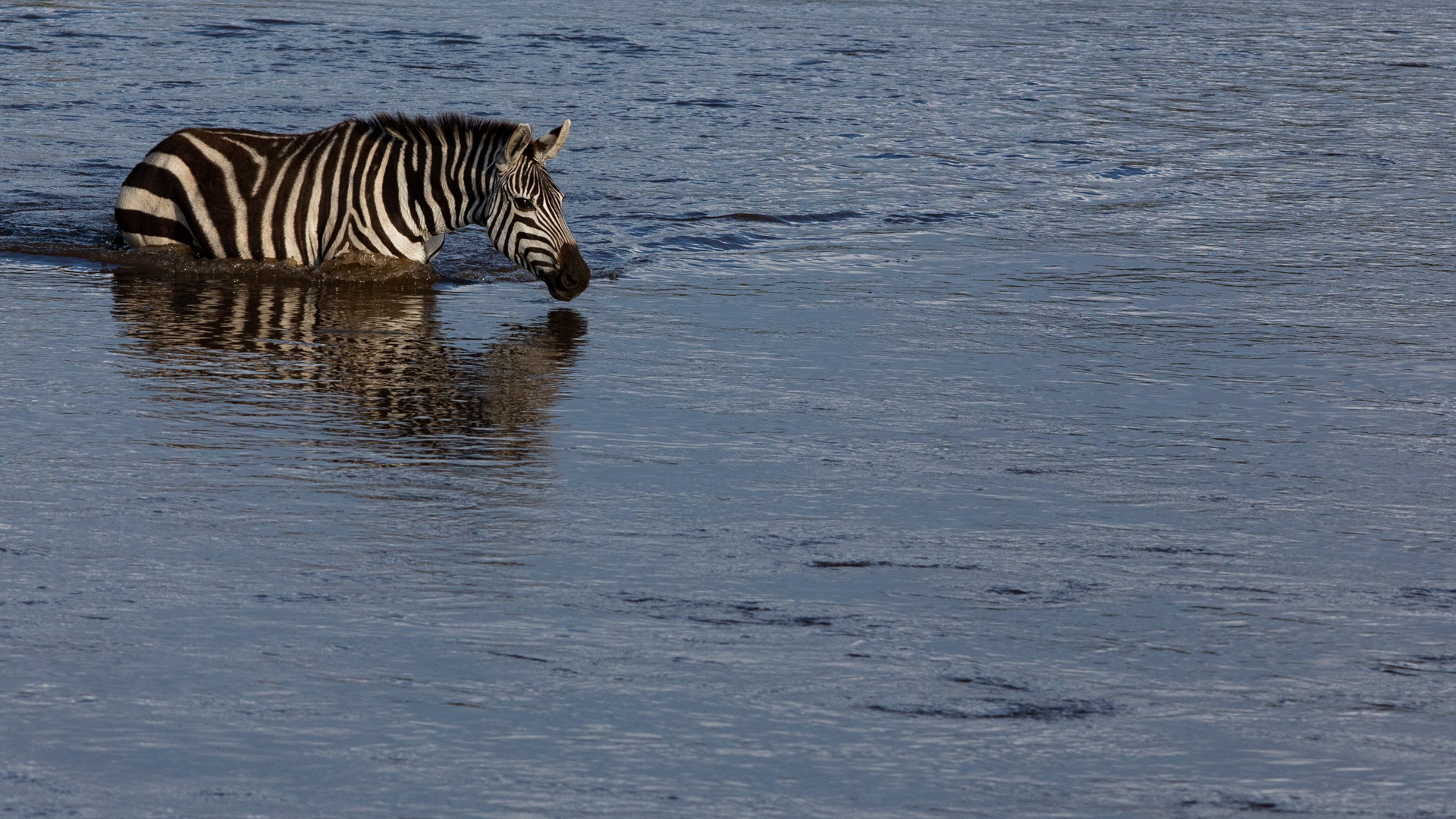
After more than an hour’s wait on the banks of the Mara River, one zebra decides to enter the water – there always has to be a leader. [f 6.3, 1/2500, ISO 500, -0.33]
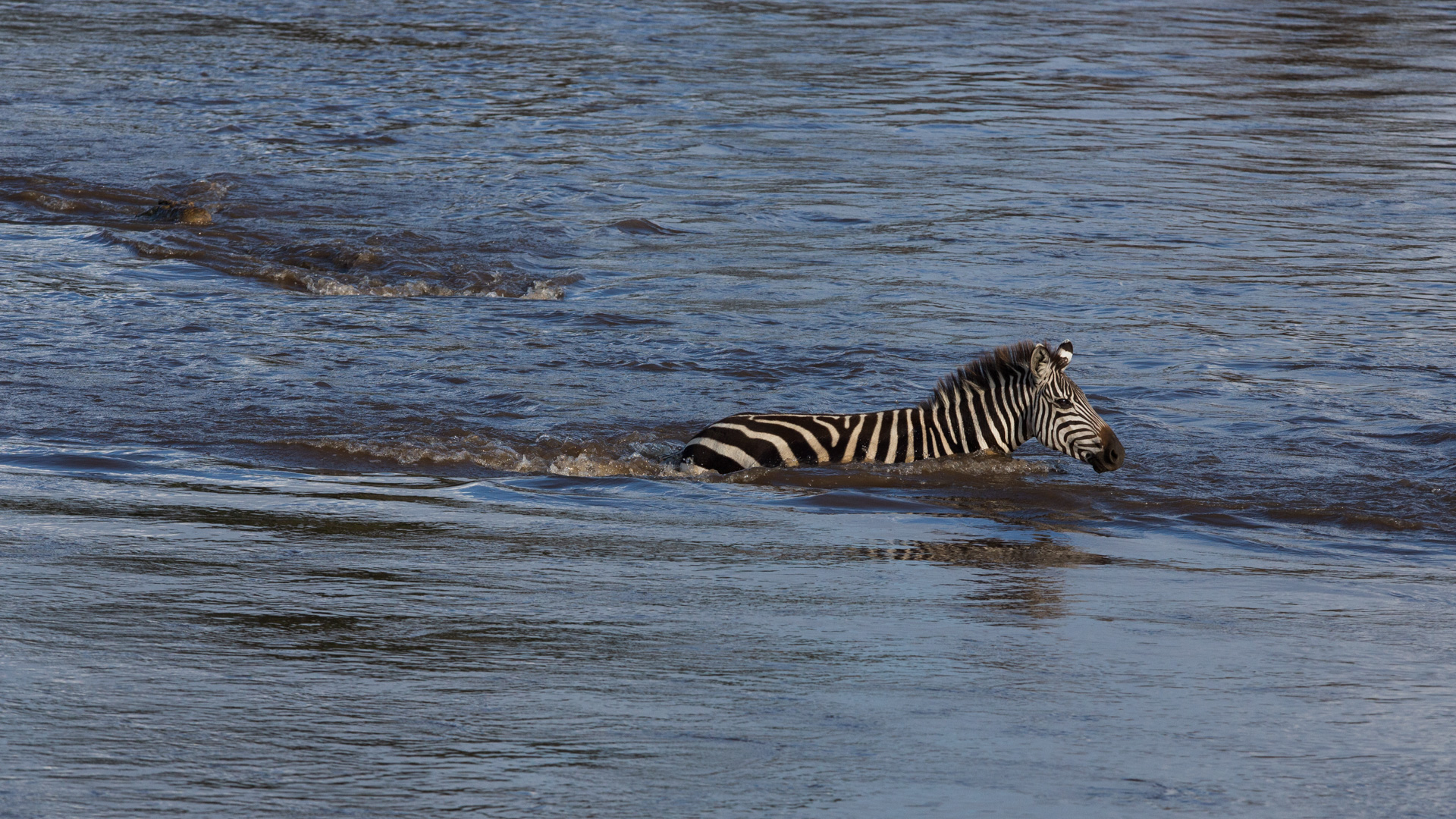
In an instant, the first crocodile is in the water and swimming. The chase is on. [f 6.3, 1/2500, ISO 500, -0.33]
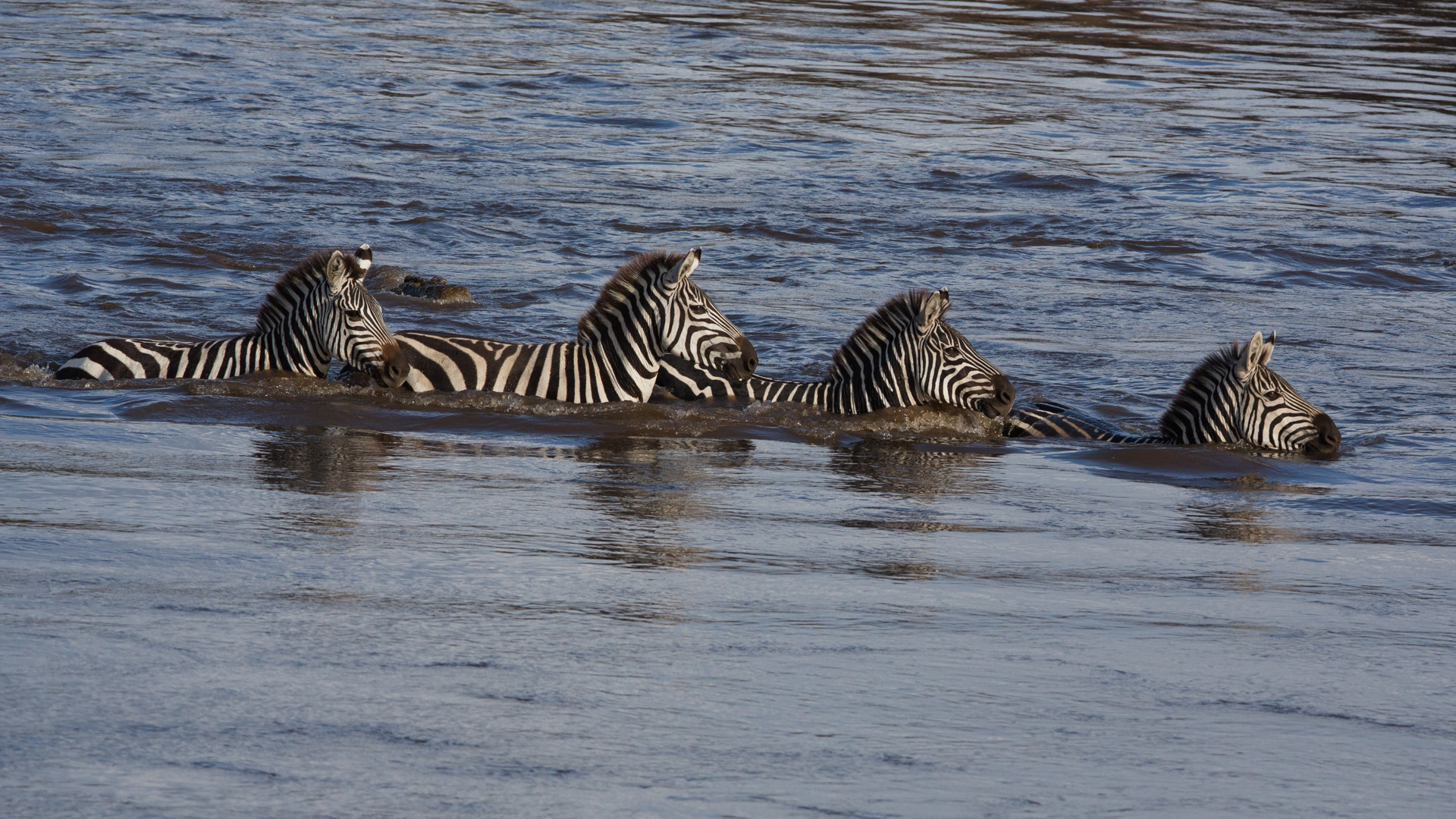
As if exhibiting infectious behaviour, the rest of the zebra follow. More crocodiles enter the water. [f 6.3, 1/2500, ISO 500, -0.33]
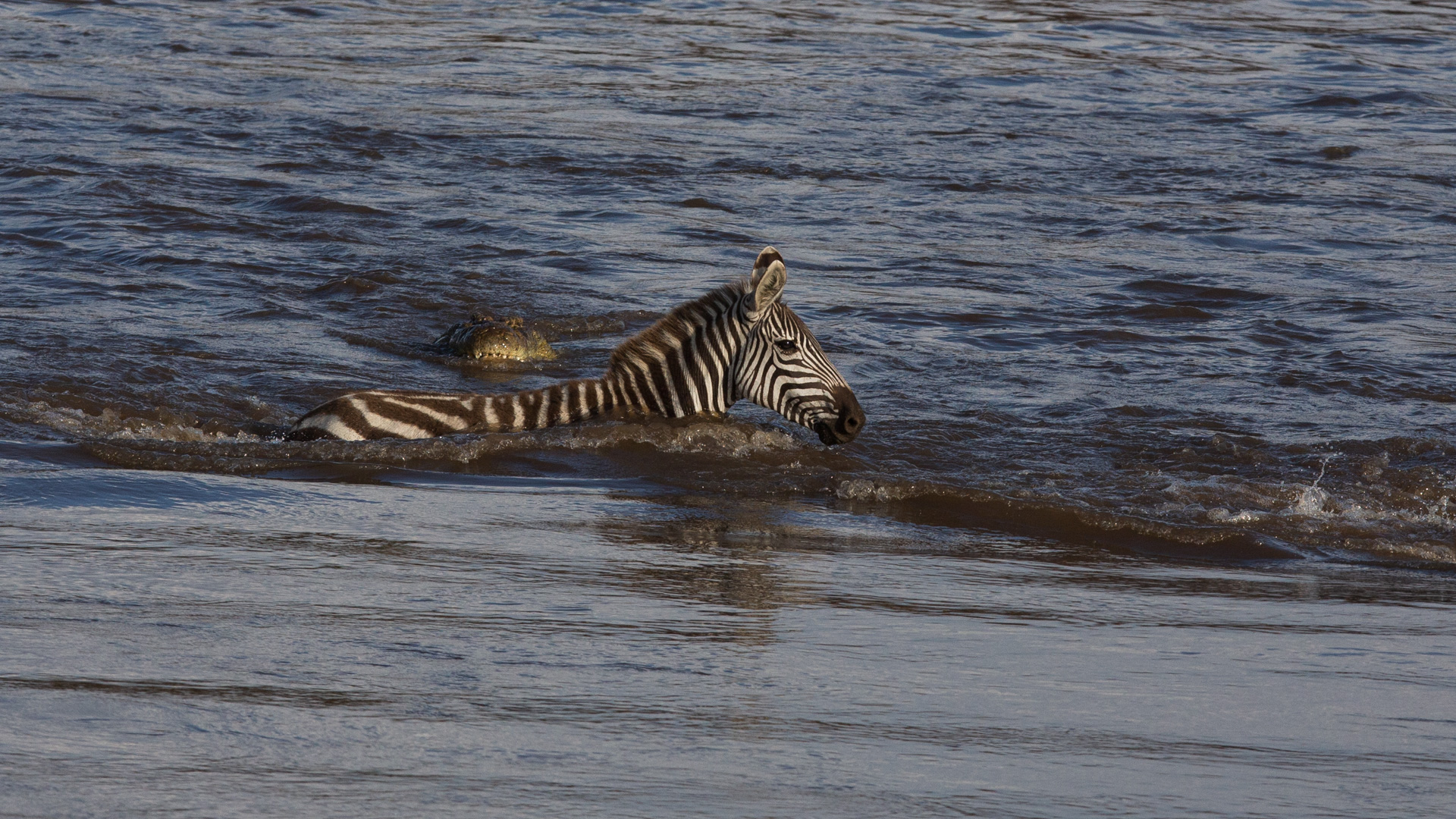
It seems to happen so slowly at times. You can see a crocodile has identified a lone zebra and now it is simply a matter of who can swim faster. [f 6.3, 1/2500, ISO 500, -0.33]
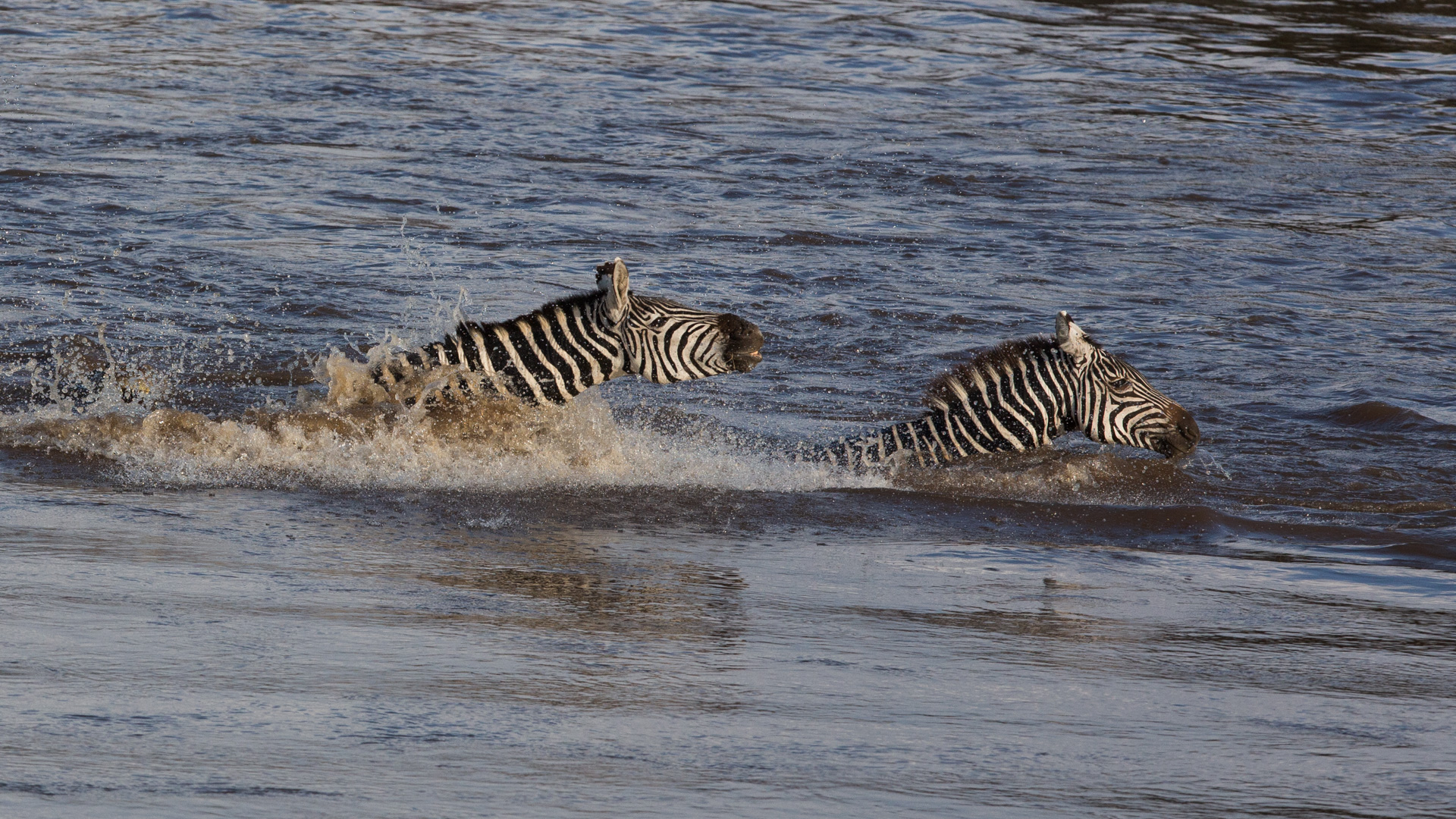
Usually you don’t see the impact; it happens under water. Watching the faces of the zebra you can usually tell what is going on. This one got away. [f 6.3, 1/2500, ISO 500, -0.33]

The crocodile chooses its next victim. [f 6.3, 1/2500, ISO 500, -0.33]
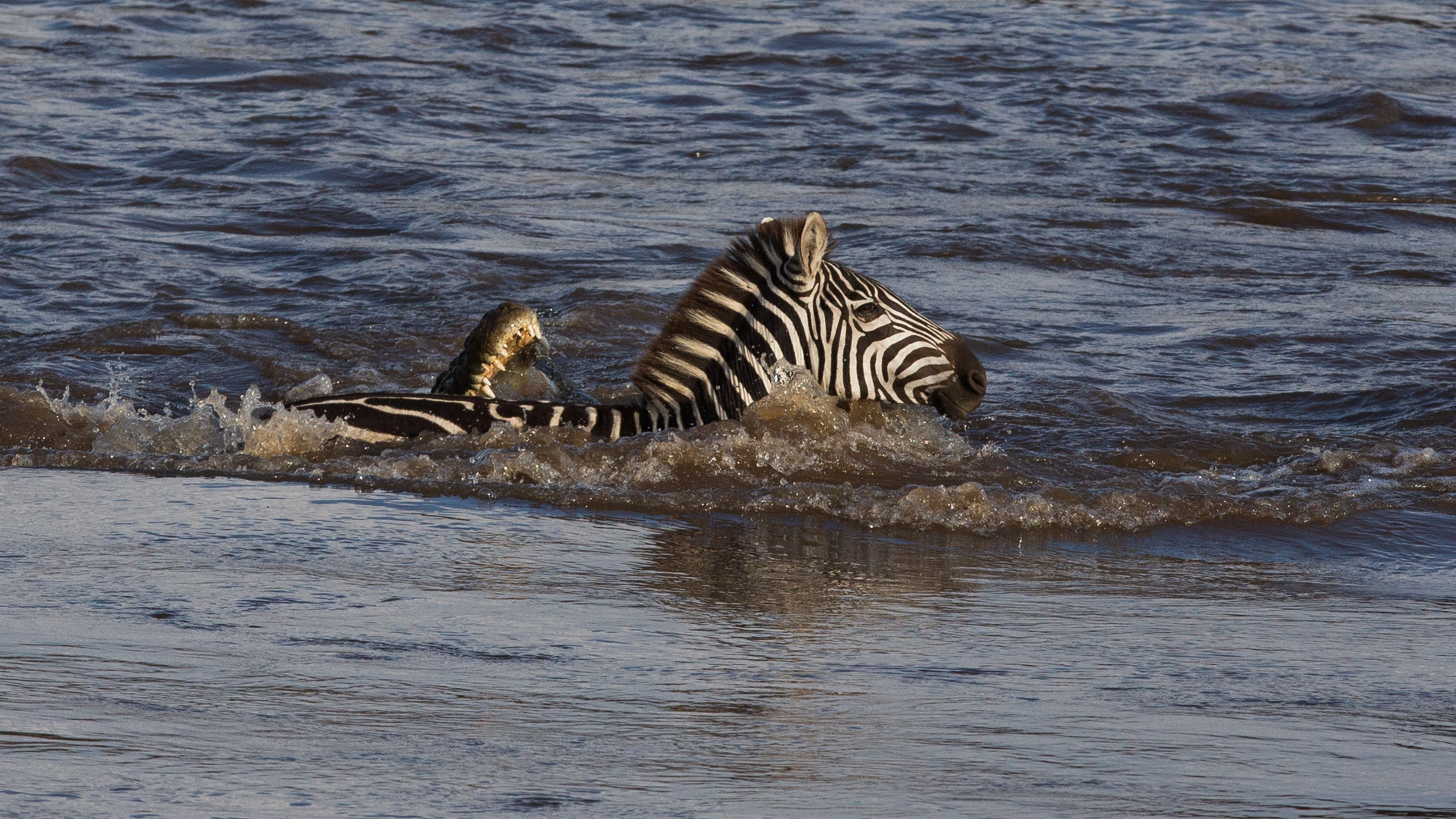
This time the attack happens above water. Jaws wide open… [f 6.3, 1/2500, ISO 500, -0.33]
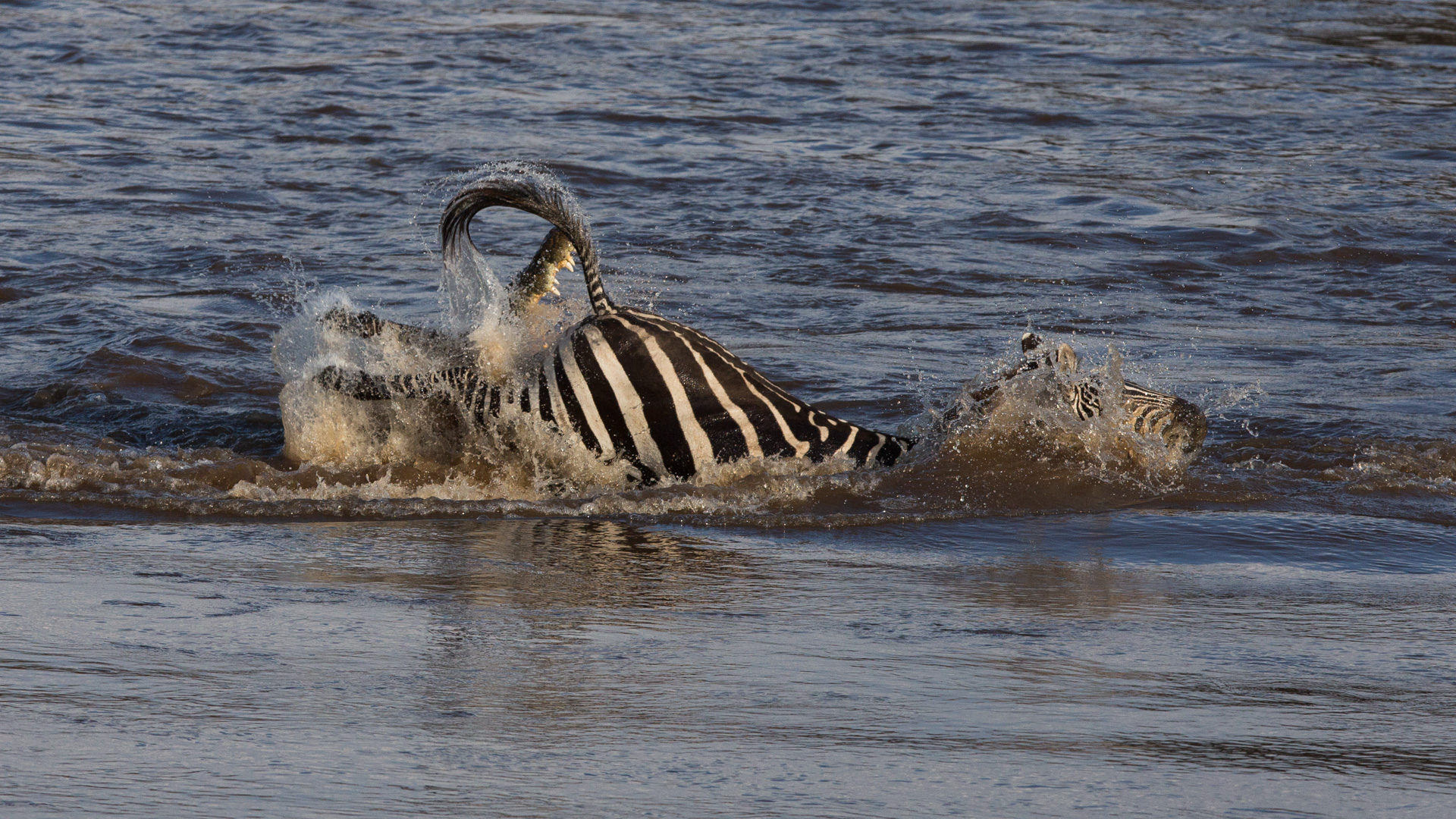
Incredibly, instincts take over and the zebra kicks. A perfectly timed kick sends the crocodile flying. [f 6.3, 1/2500, ISO 500, -0.33]

It is desperate. [f 6.3, 1/2500, ISO 500, -0.33]
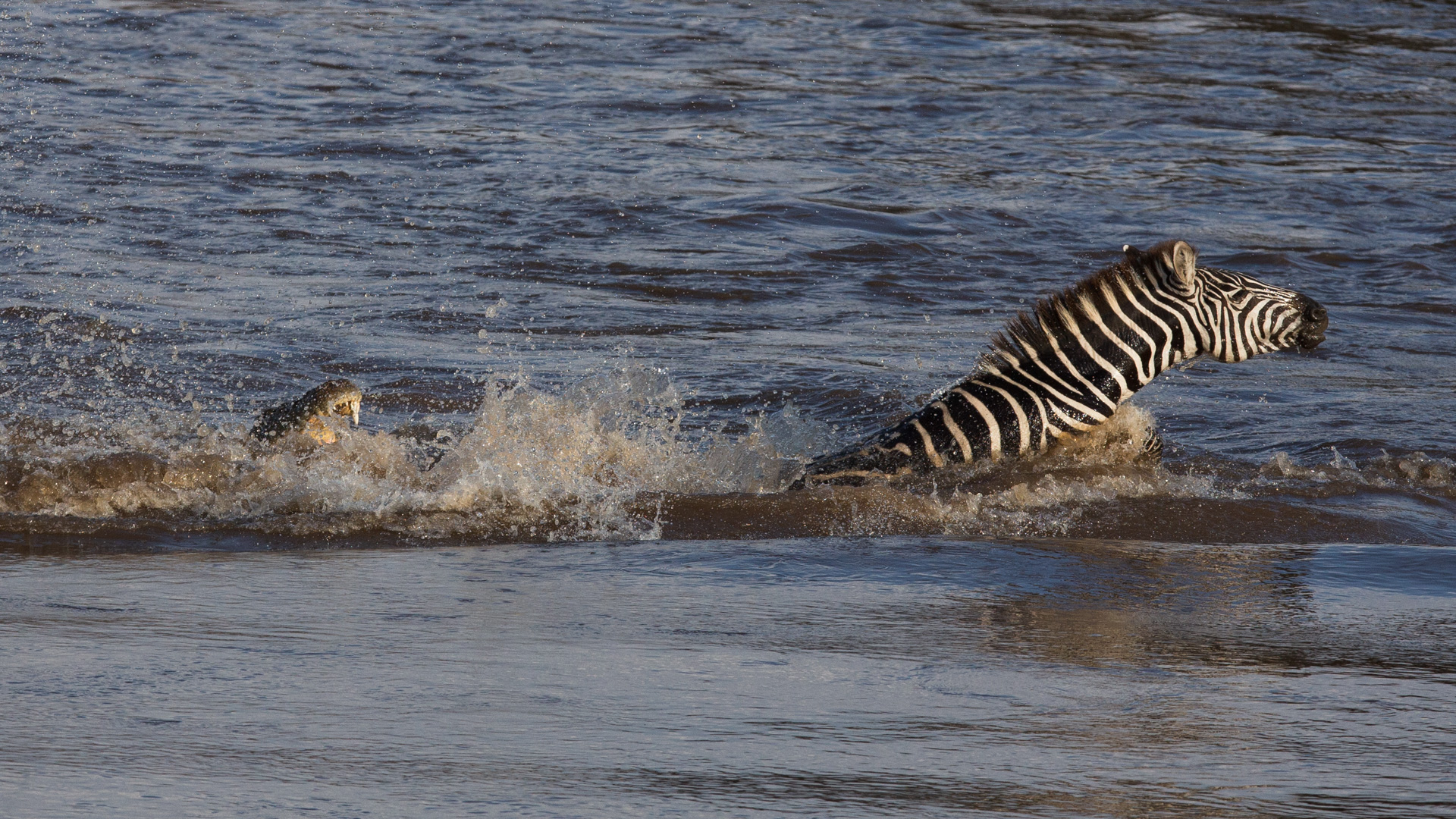
Swim zebra swim. [f 6.3, 1/2500, ISO 500, -0.33]
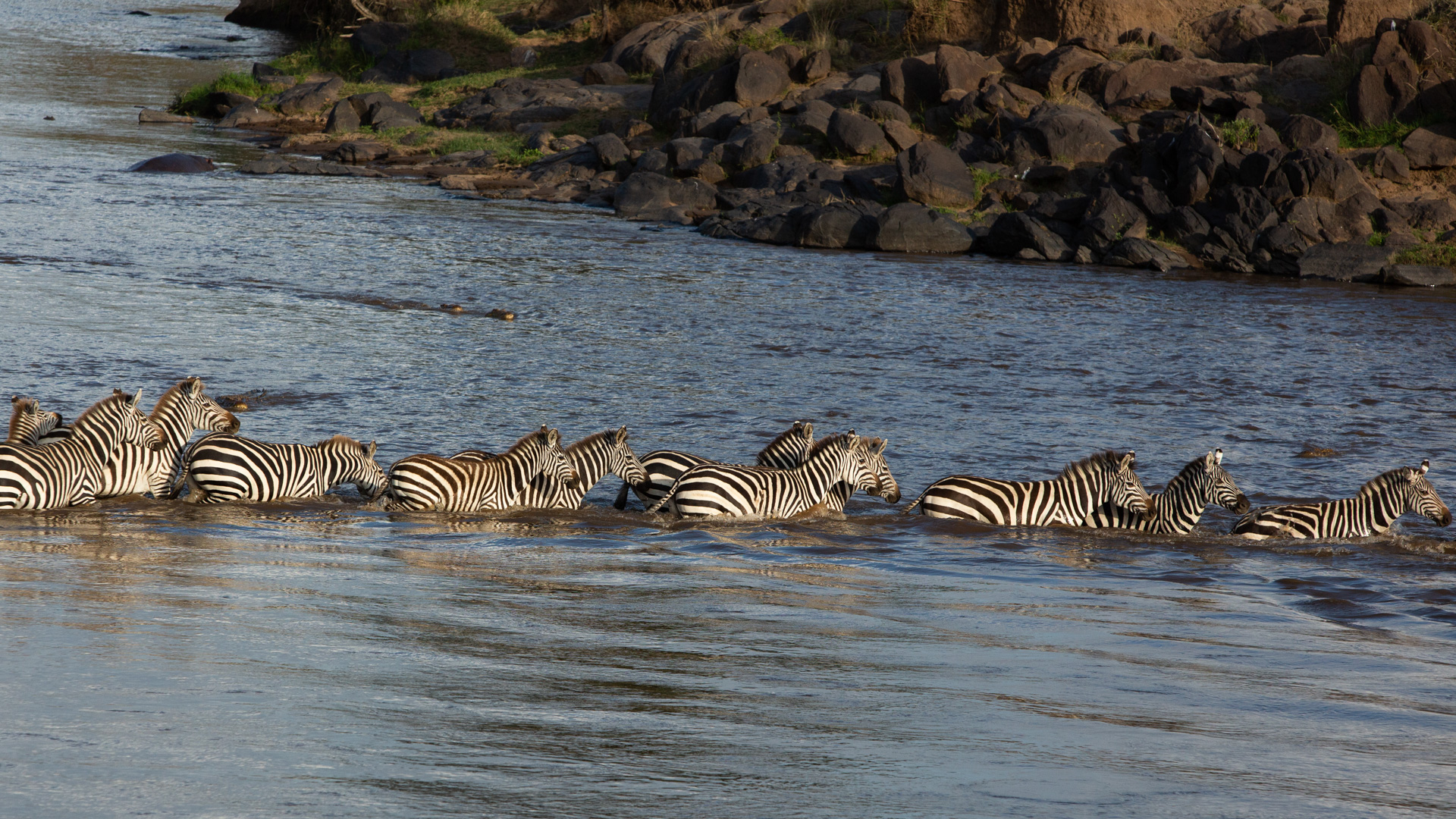
Whilst one zebra is swimming for its life, the rest of the herd wade into the waters. By now, news has travelled along this stretch of the river and the river is teeming with crocodile. [f 6.3, 1/2500, ISO 500, -0.33]
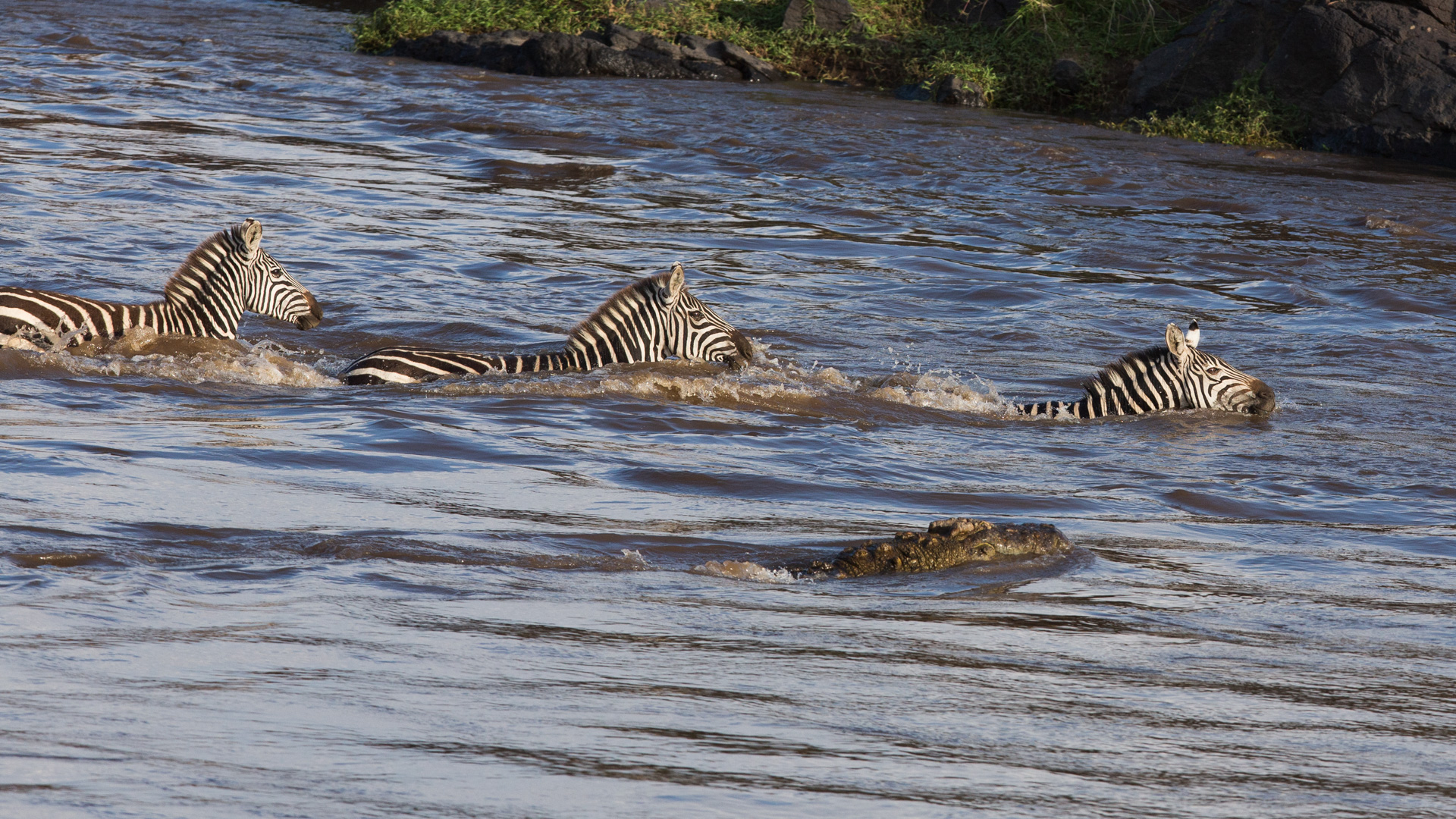
Everywhere you look there are shadows. [f 6.3, 1/1250, ISO 500, -0.33]
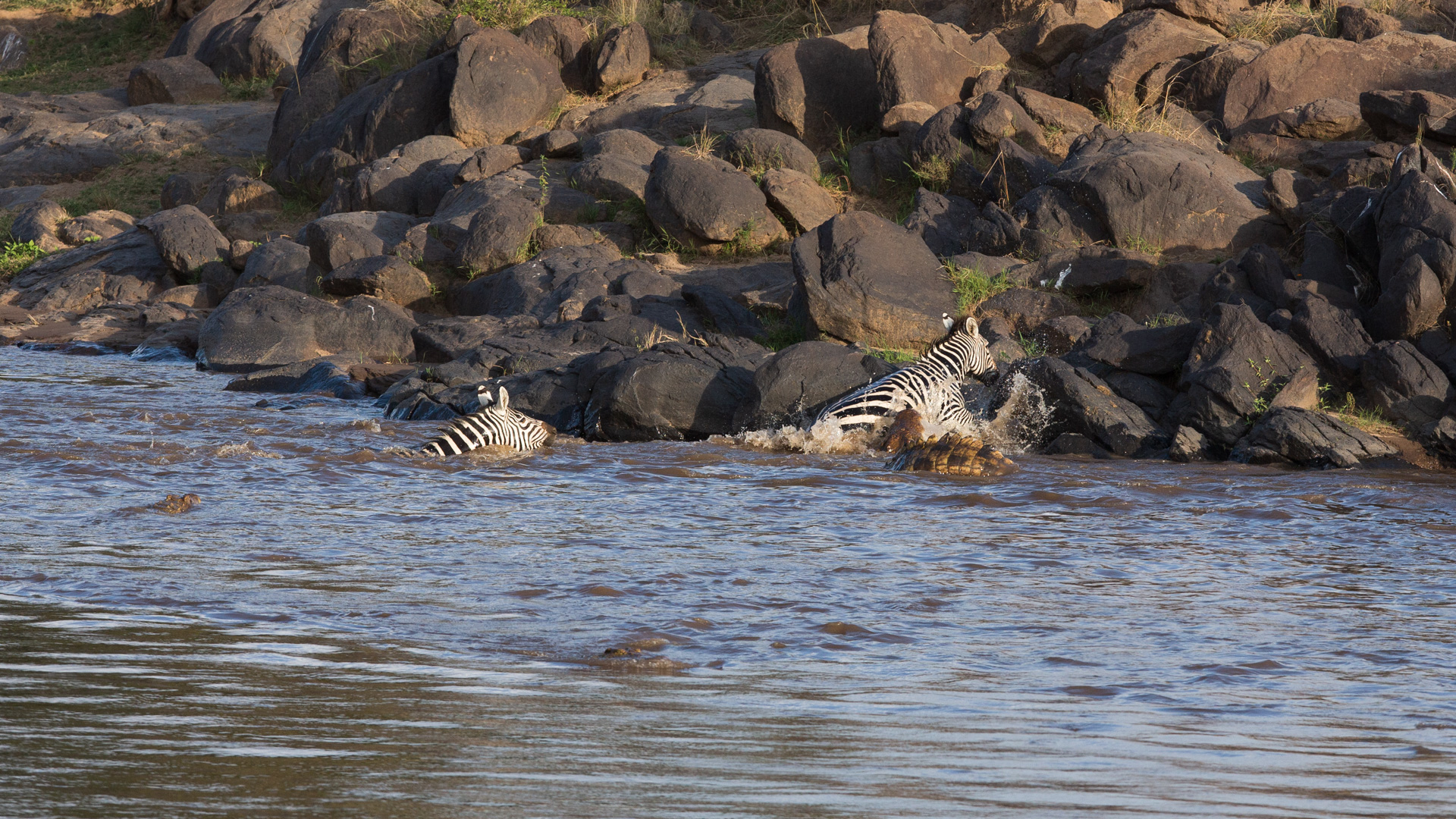
This specific crossing is difficult as jagged rocks make it near impossible for the zebras to get out. By now crocodiles are launching attacks from all directions. The water is churning. [f 6.3, 1/1000, ISO 500, -0.33]
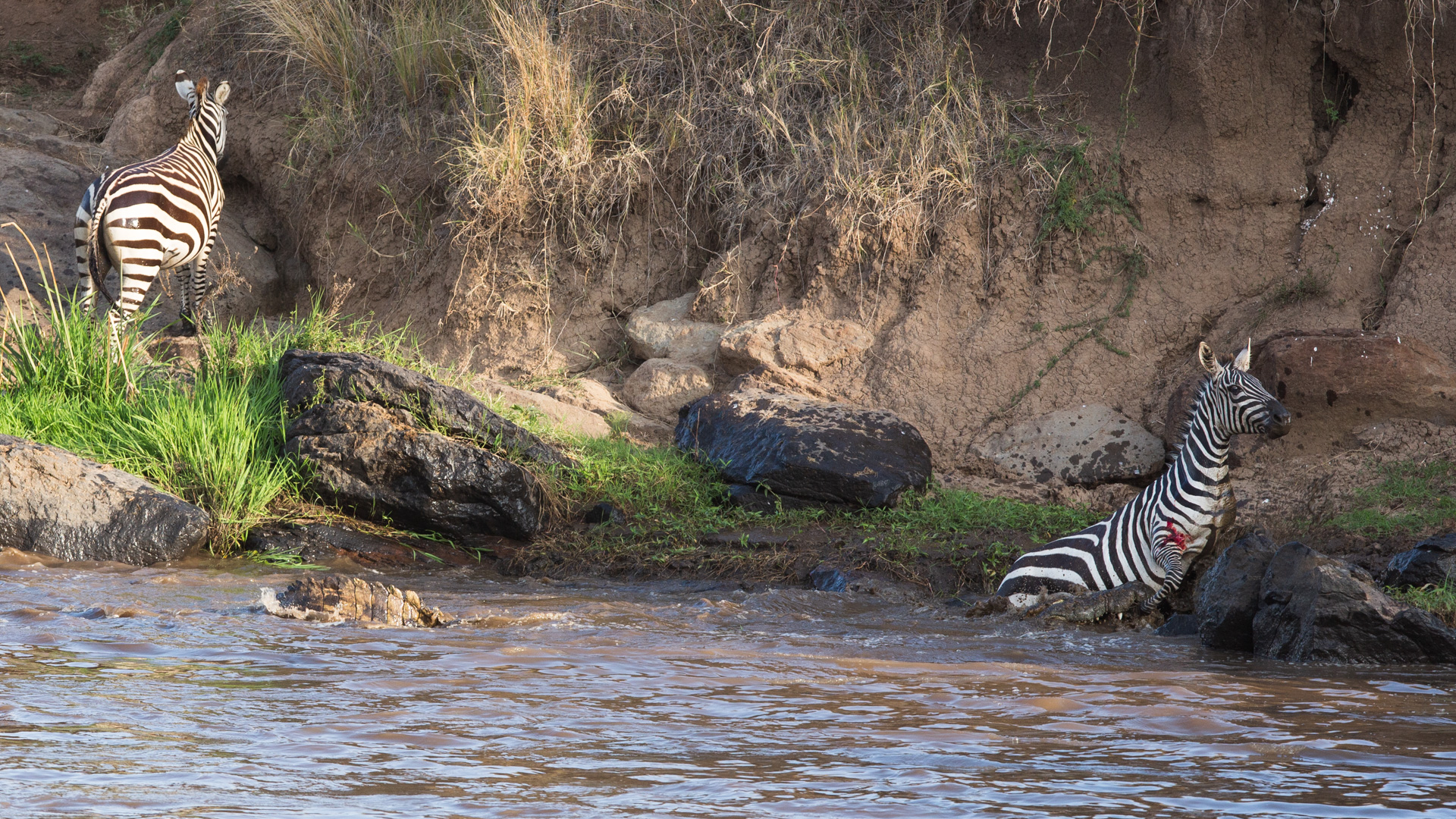
Forced into a deep channel, the zebra must now swim. The odds are heavily stacked against them. [f 6.3, 1/400, ISO 500, -0.33]
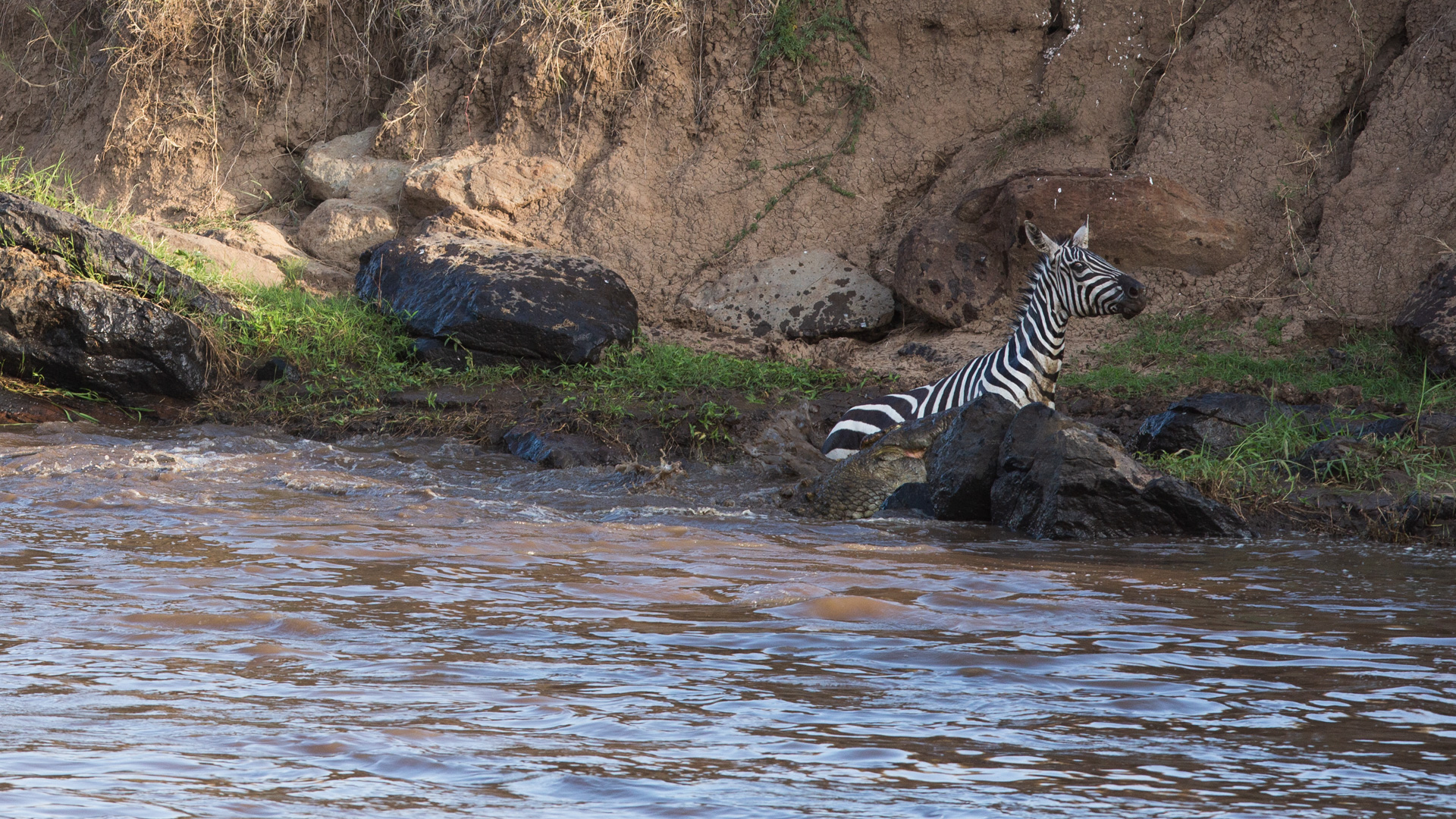
Some that make it to the other side sadly never make it out. But they never stop fighting for their lives. It is this part that is often this most difficult to watch. [f 6.3, 1/400, ISO 500, -0.33]

Immense power…jaws locked…nature at its most cruel. [f 6.3, 1/400, ISO 500, -0.33]
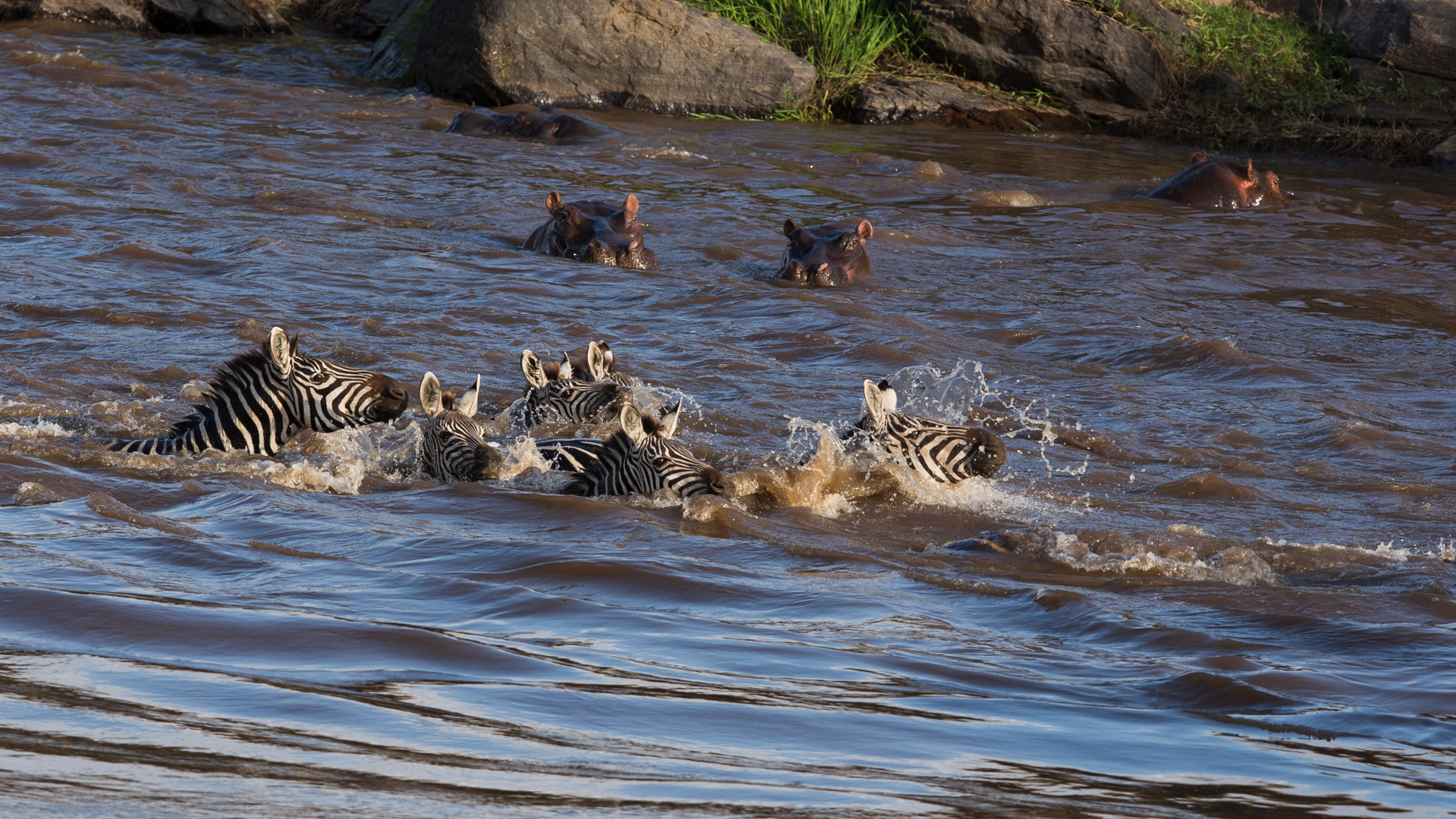
I often put down my camera at this stage. The battle is seemingly pointless. Now, all that is left is for the crocodile to pull the zebra into the deeper waters where it will drown. [f 6.3, 1/2500, ISO 500, -0.33]

The fighting is now over. [f 6.3, 1/320, ISO 800, -0.33]
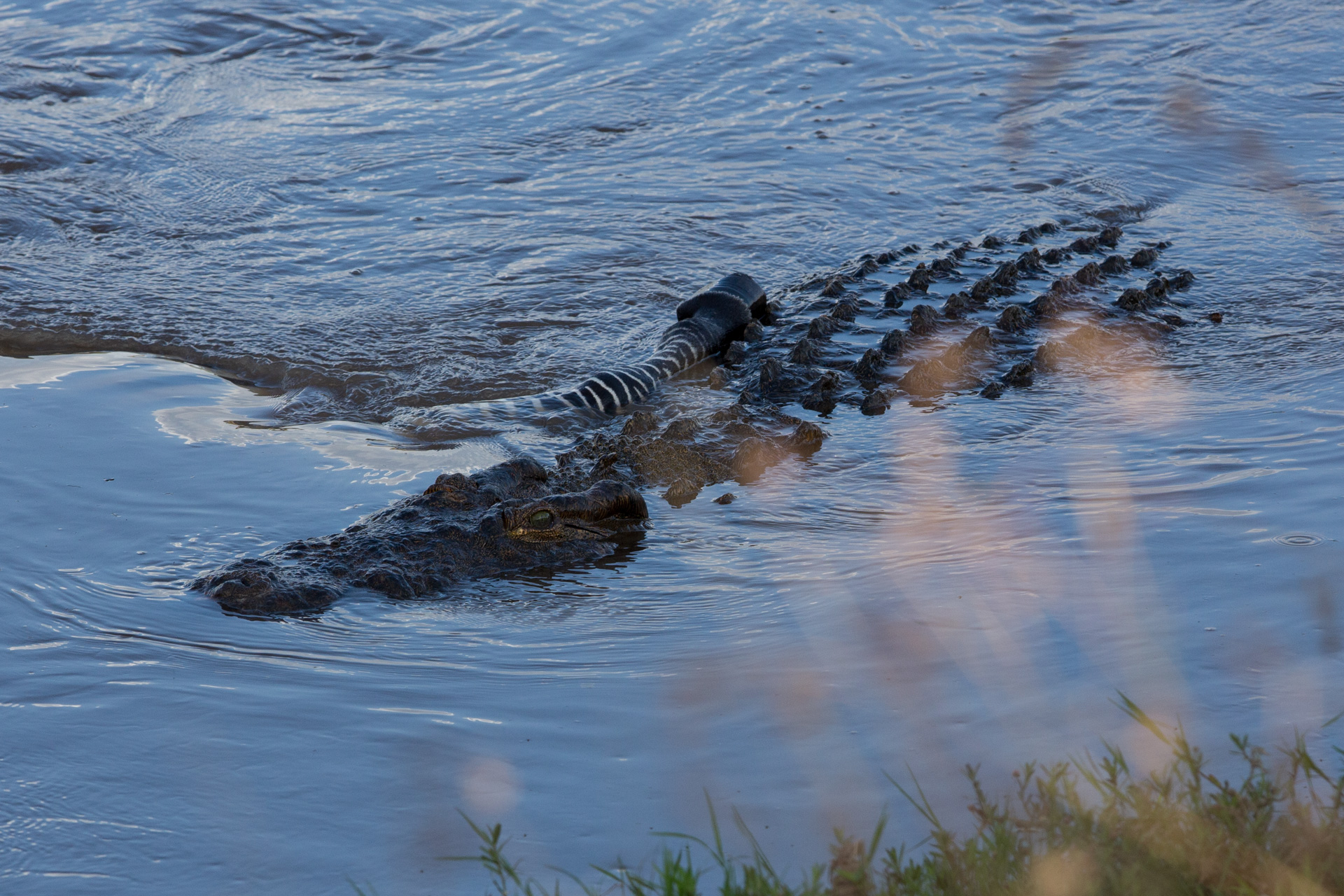
A dinosaur swims away with his prize. [f 6.3, 1/640, ISO 500]
Now, an entire week in the Mara could not possibly be portrayed in one sequence of photographs, especially when the lion-viewing has been so sensational. As busy as things have been at the lodge, I did manage to get out for two short drives and these were just some of the highlights.
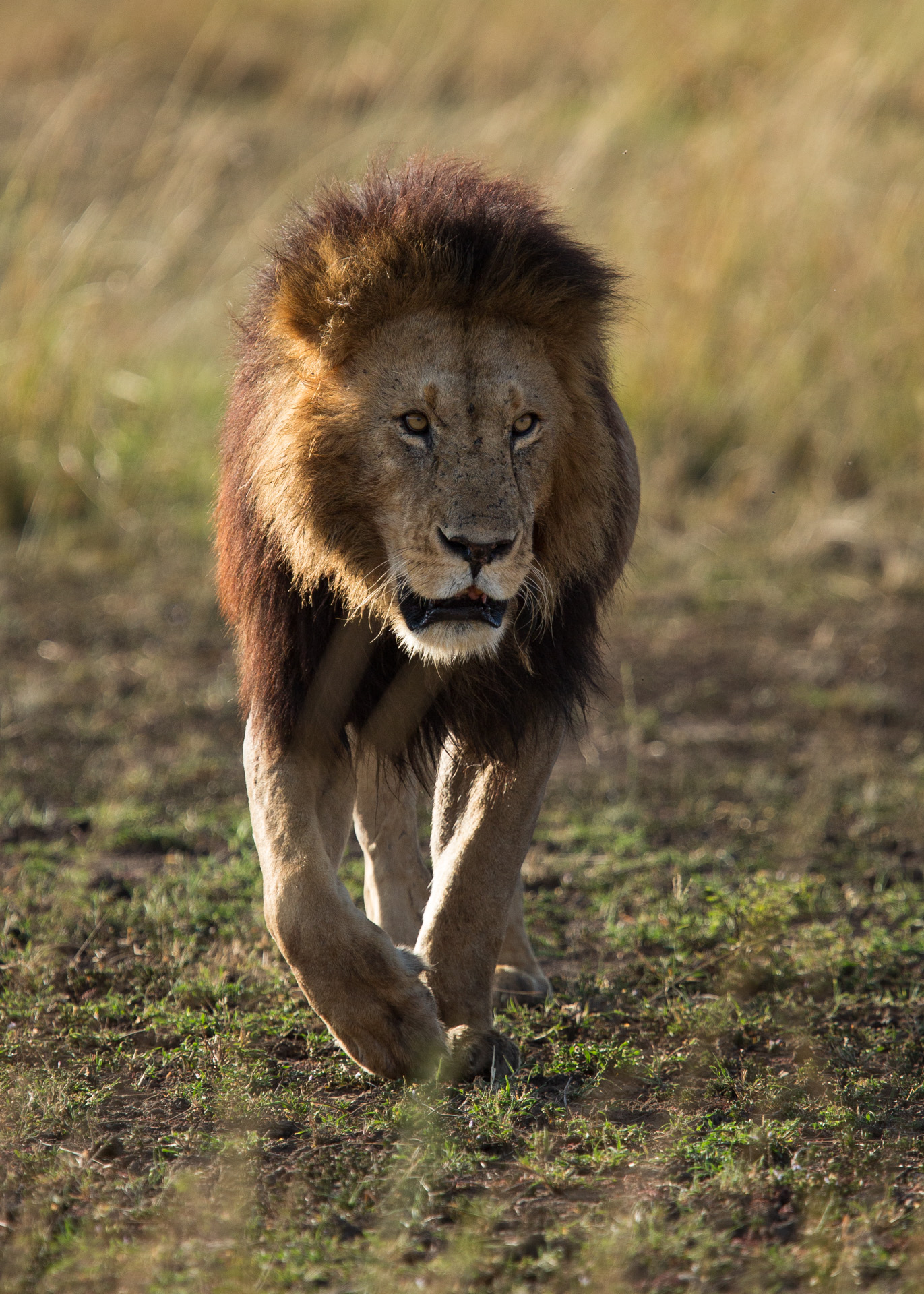
The Short-Tail male from the Kichwa coalition; in my opinion the prettiest male lion currently in the Mara Triangle. [f 6.3, 1/640, ISO 500]

A side-on view of the king. [f 4.5, 1/5000, ISO 400, -0.33]
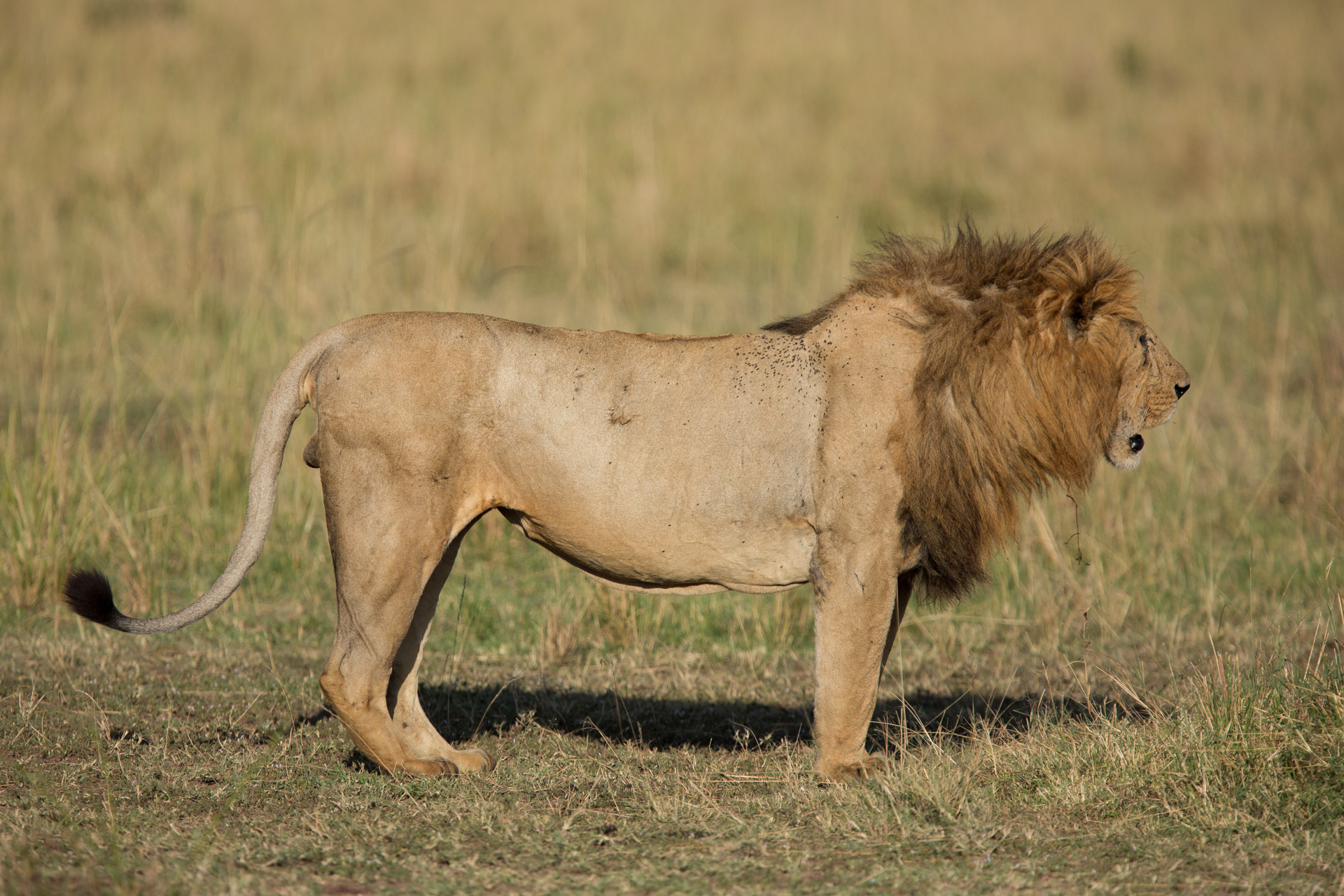
And for comparison sake, a side on view of his coalition partner: Fang [f 4.5, 1/5000, ISO 400, -0.33]
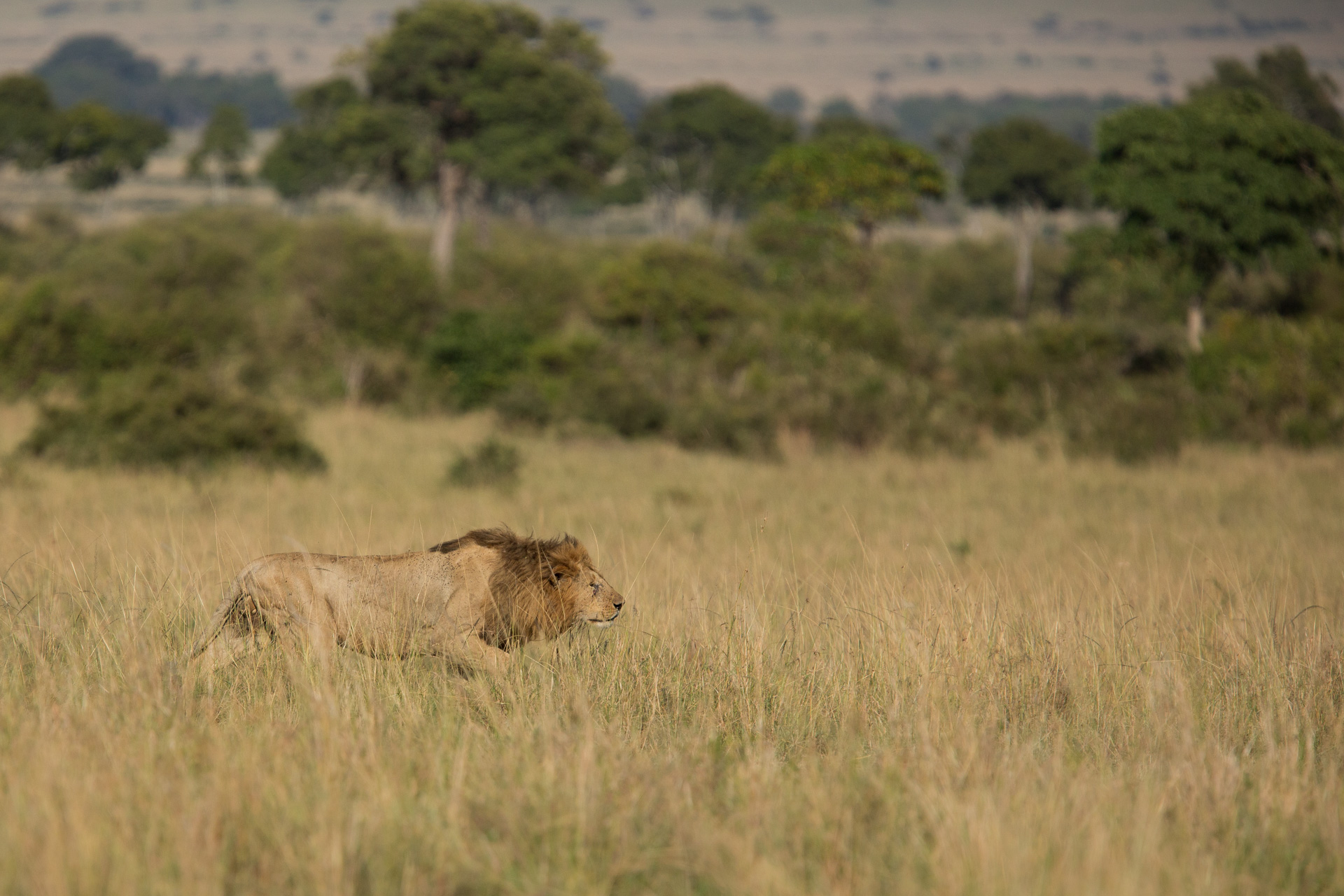
Whilst watching these magnificent males moving through the grass, a young wildebeest suddenly ran into the area. It is incredible to watch a lethargic lion ready himself for action in mere seconds. The stalk was on, and I was in the prime position to capture the scene. [f 4.5, 1/5000, ISO 500, -0.33]
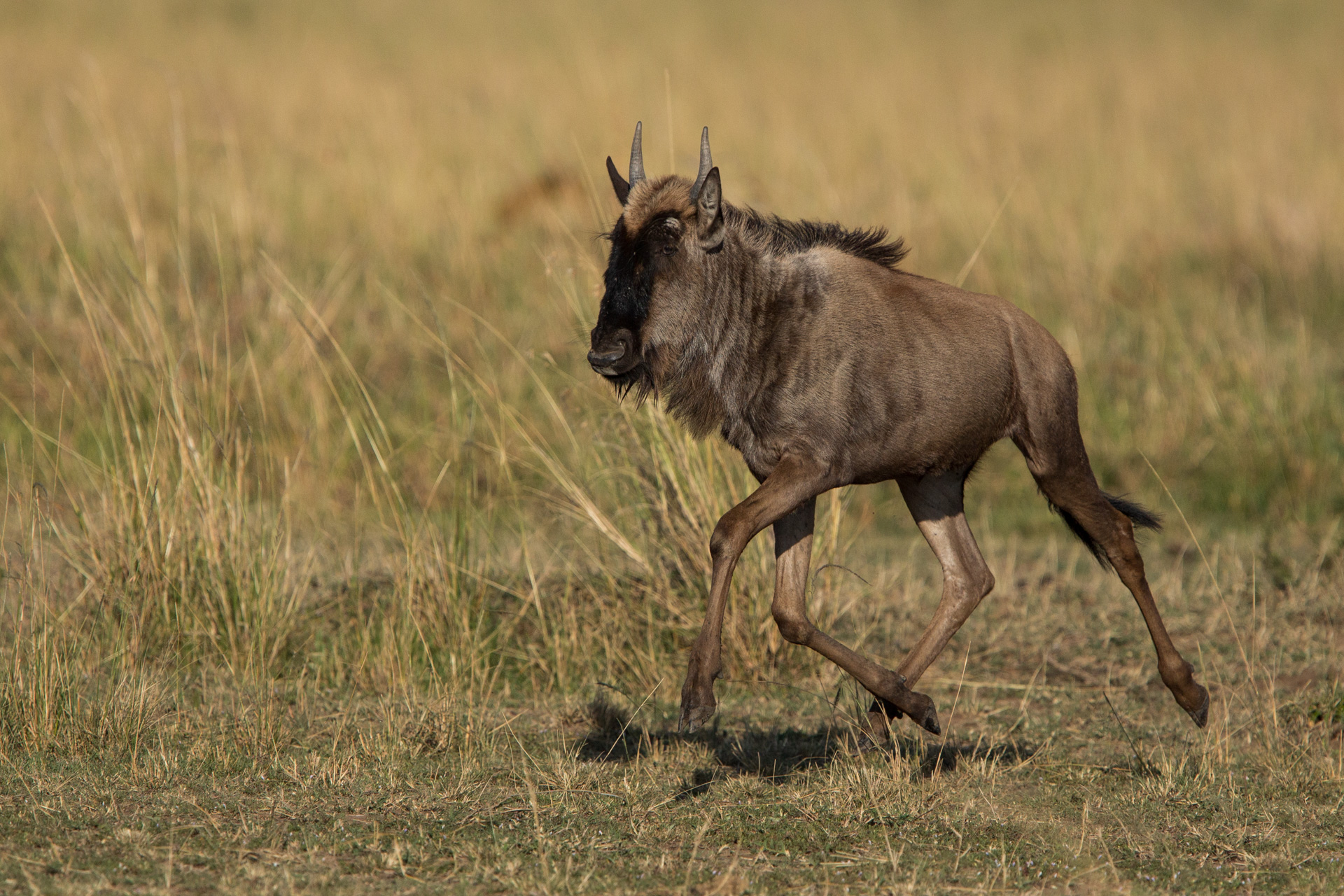
Incredibly, the two male lions opted against the chase. Look closely in the background and you will see Fang’s golden mane in the grass. Why lion sometimes decide not to attack baffles me. If ever there was an opportunity for an easy kill, this was it. [f 4.5, 1/5000, ISO 500, -0.33]
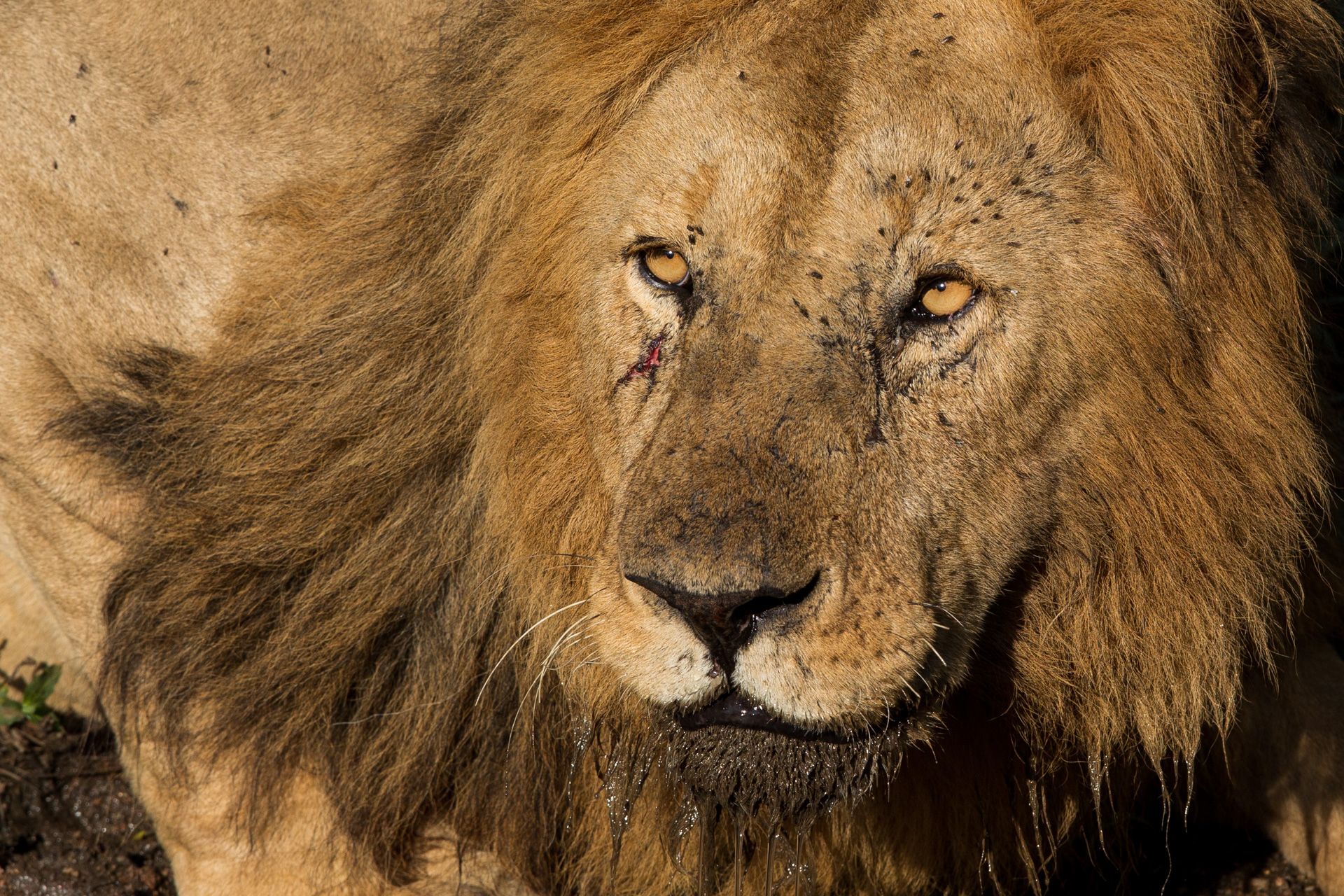
After the unsuccessful hunt, the two males moved off into the thicket. Before disappearing for the day, they stopped for a drink from a small puddle. Excellent morning light and an up-close sighting resulted in some magical detail. [f 7.1, 1/1250, ISO 320, -0.67]

Same area, different day – the Kabarini Pride (aka: River Pride, Marsh Breakaway Pride, Oloololo Breakaway Pride) are looking fantastic. The bond between these two (male and female) is truly special to watch. [f 9.0, 1/200, ISO 500]
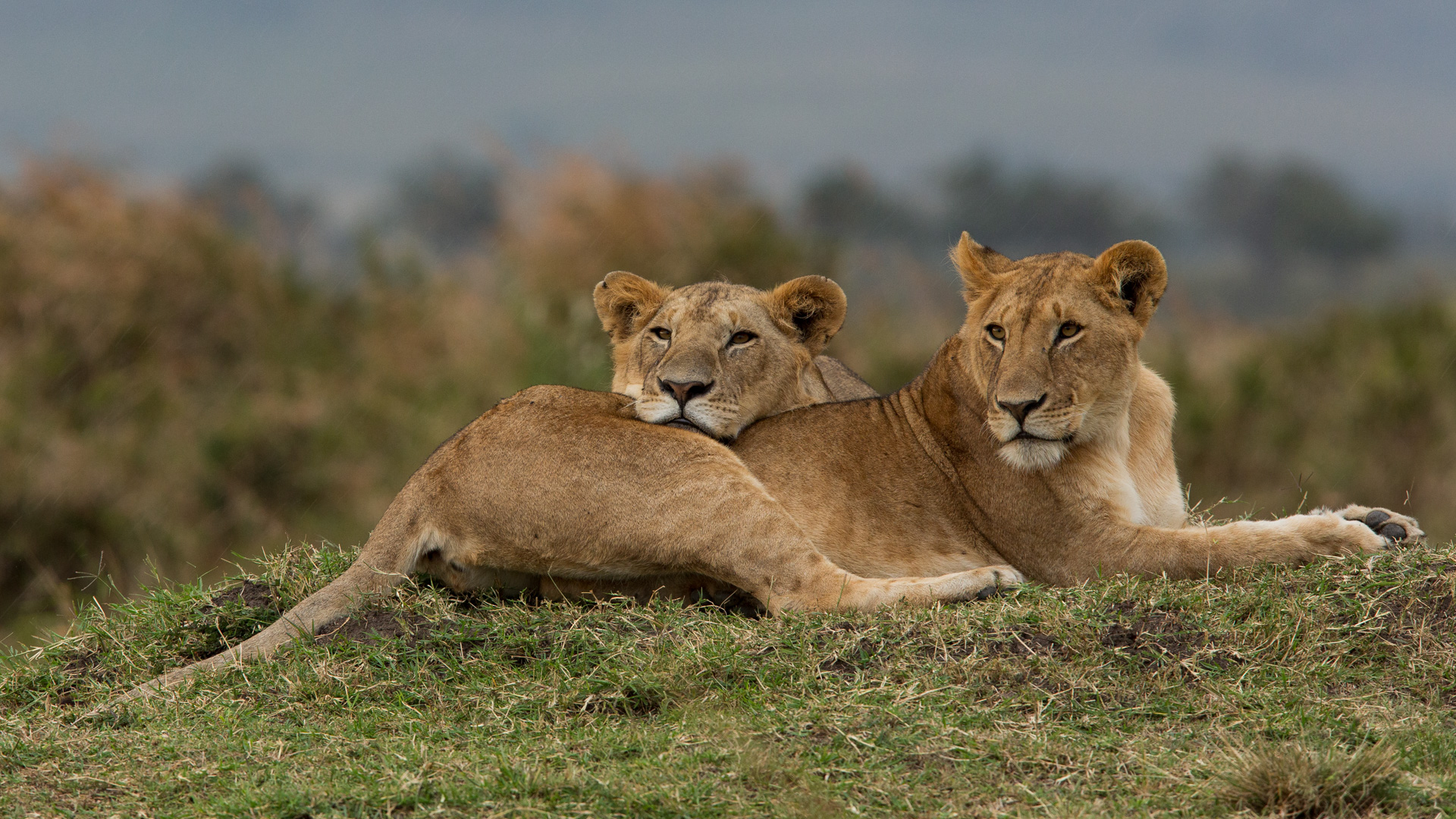
As the rain started to fall, they resisted the temptation to seek shelter under a bush, instead opting for a cuddle. [f 7.1, 1/200, ISO 1000, -0.33]

One of the lionesses in this pride has two relatively large cubs. I found them this week feasting on a warthog. Here, I managed to capture the moment one of the cubs stalked its sibling. [f 4.5, 1/160, ISO 640]
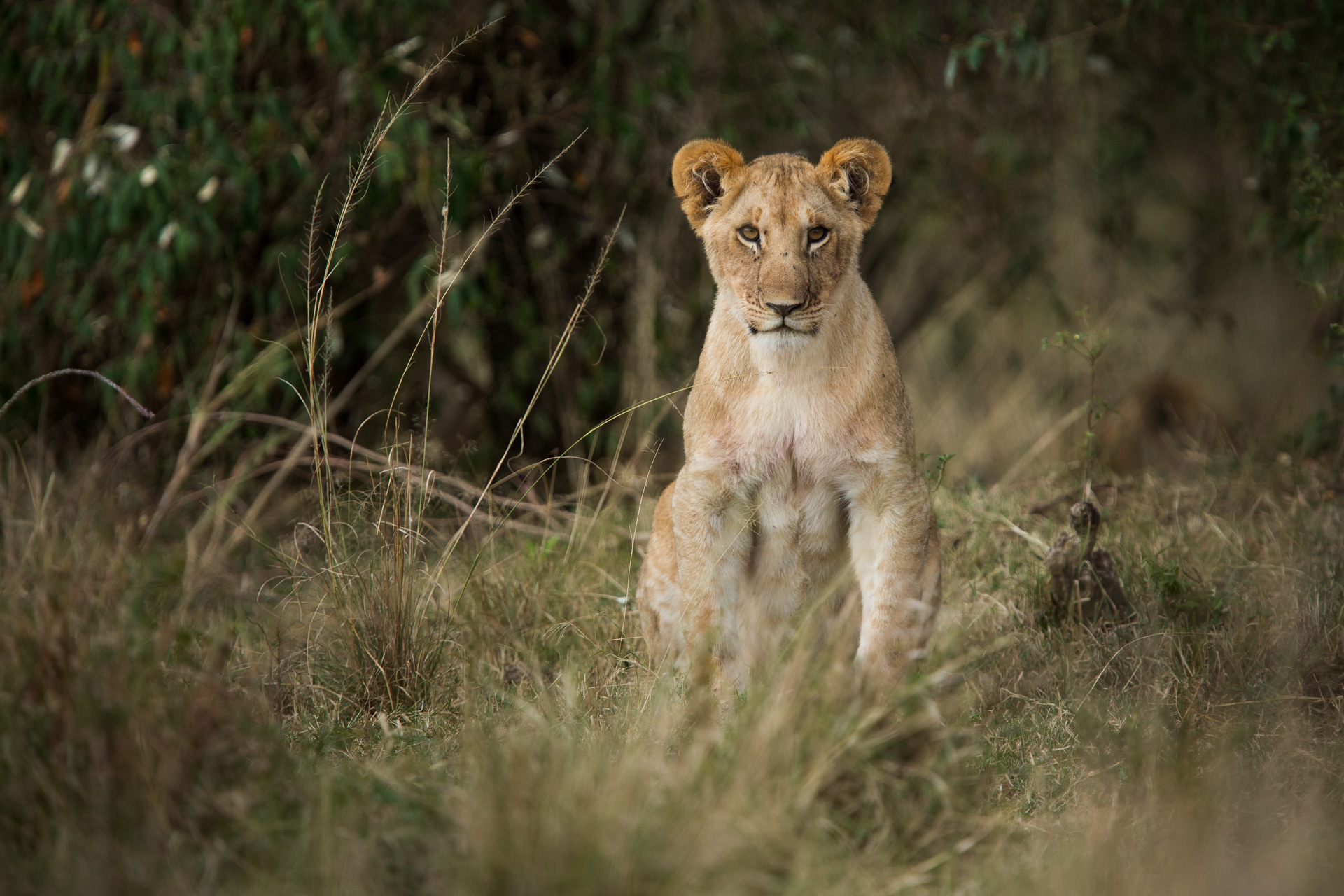
At this age, lion cubs are inquisitive and greatly entertaining to sit and watch. Instead of racing around the park I decided to spend three hours with this little pride – the results were fantastic. [f 4.0, 1/640, ISO 500]
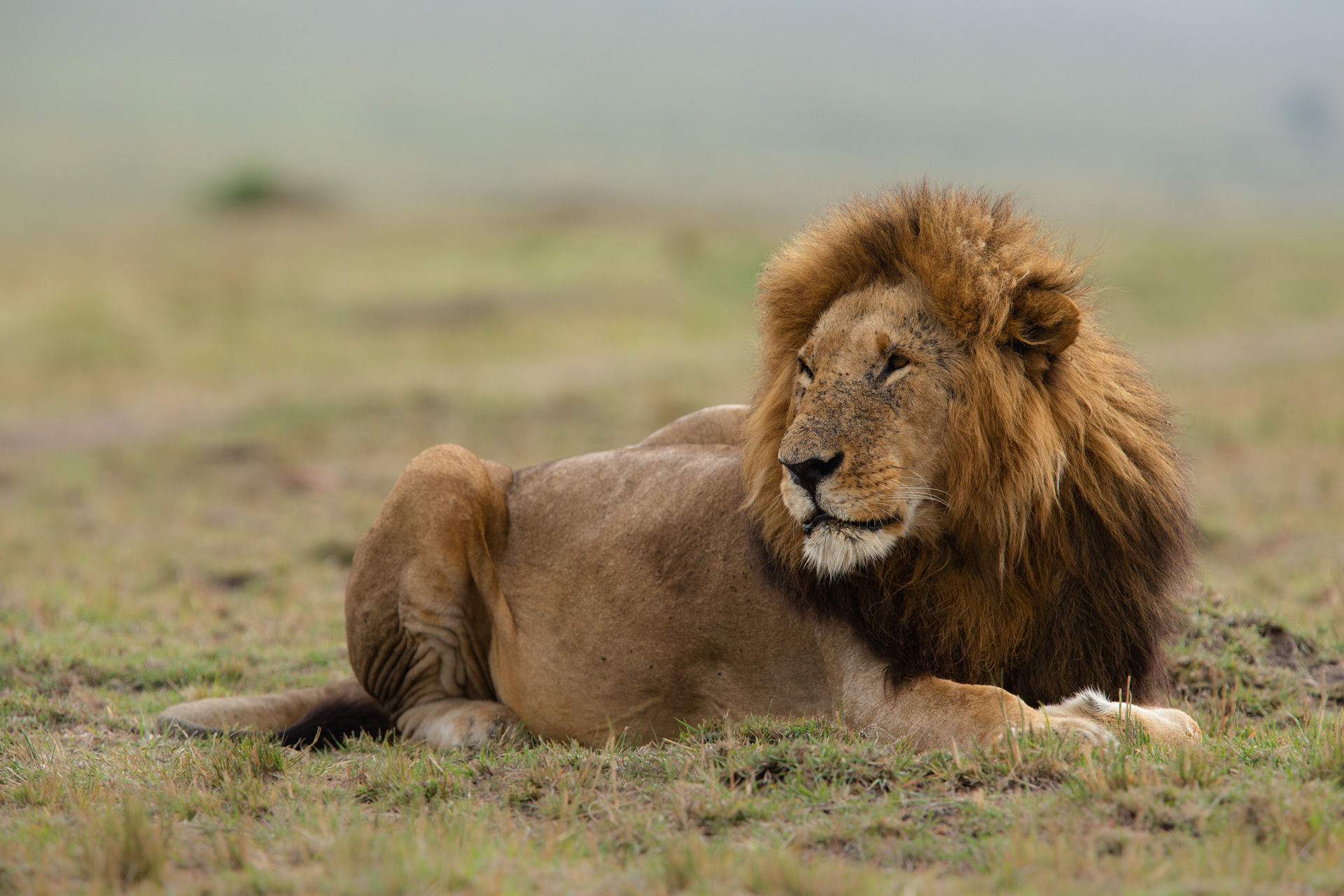
Meanwhile in the deep south-eastern parts of the Mara Triangle, the Purungat males are as dominant as ever. There are apparently new cubs in this area, although I have yet to see them. Perhaps next week? I took this photograph directly into the morning light and from a very low angle – I love the gentle pastel tones. [f 5.6, 1/500 ISO 250]
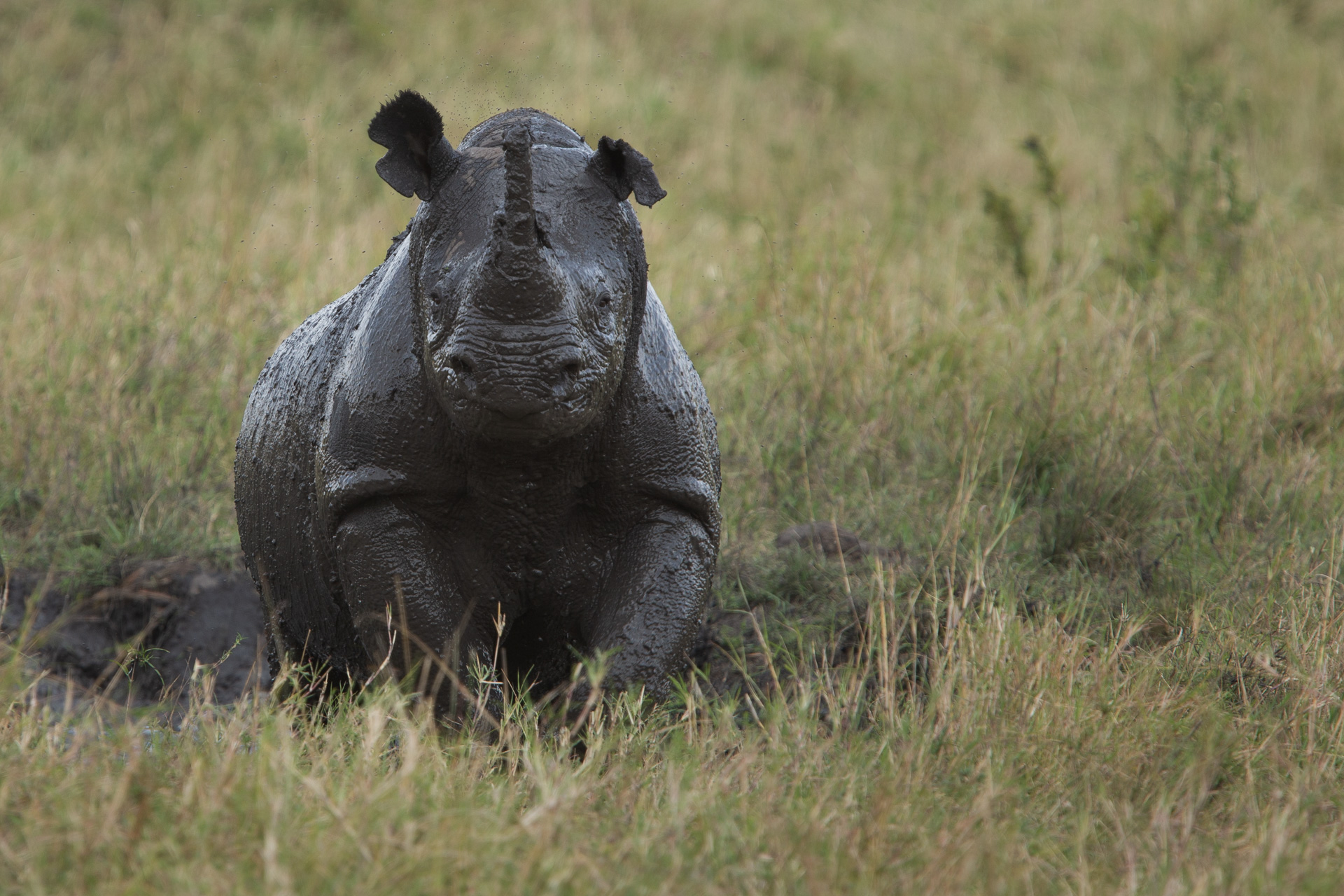
Moving away from lions now. This rhino image was a treat, largely because it was so unexpected. It was taken in a part of the reserve which traditionally doesn’t have rhino. I asked the guiding team after the drive and they all said they had never seen a rhino in that area – wonderful news indeed. [f 4.5, 1/500 ISO 160]

A different rhino sighting this week, and a very comical one at that. Three wildebeest squared up against two rhino. They postured at each other for a few minutes, and at one stage the wildebeest even dropped its head and charged at the rhino. Incredibly, the wildebeest won this battle. [f 4.5, 1/500 ISO 160]

This photograph was taken in near darkness. It was pouring with rain and a tiny elephant was seeking refuge from the raindrops by hiding underneath its mom. Meanwhile another elephant came behind and created the perfect ‘cocoon’ for this youngster. The lighting was difficult, but the moment magical. [f 2.8, 1/125 ISO 2000, -0.67]
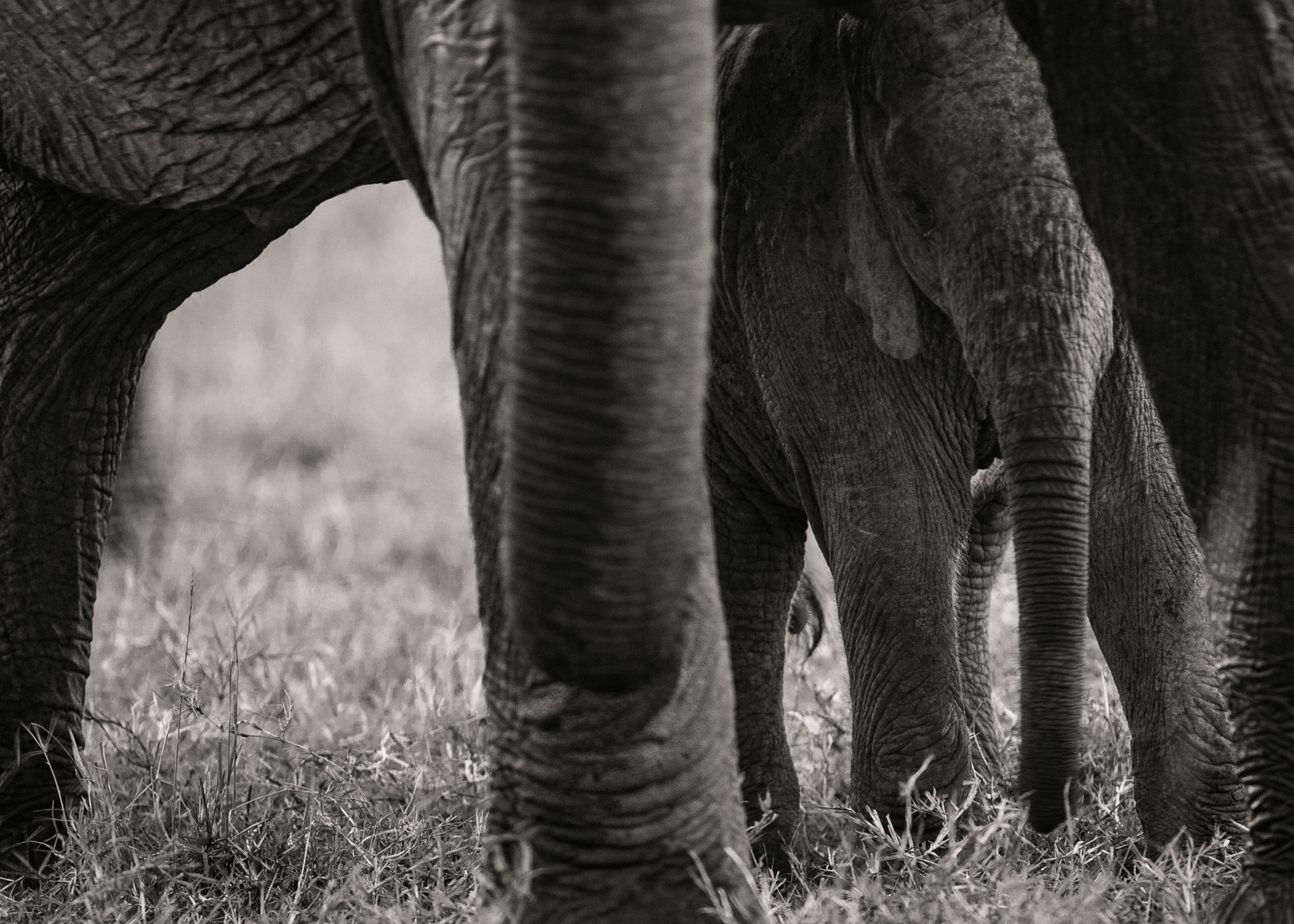
Another shot from the same sequence. I was enjoying using the legs and trunks as parallel lines and frames. [f 2.8, 1/50 ISO 800, -0.67]
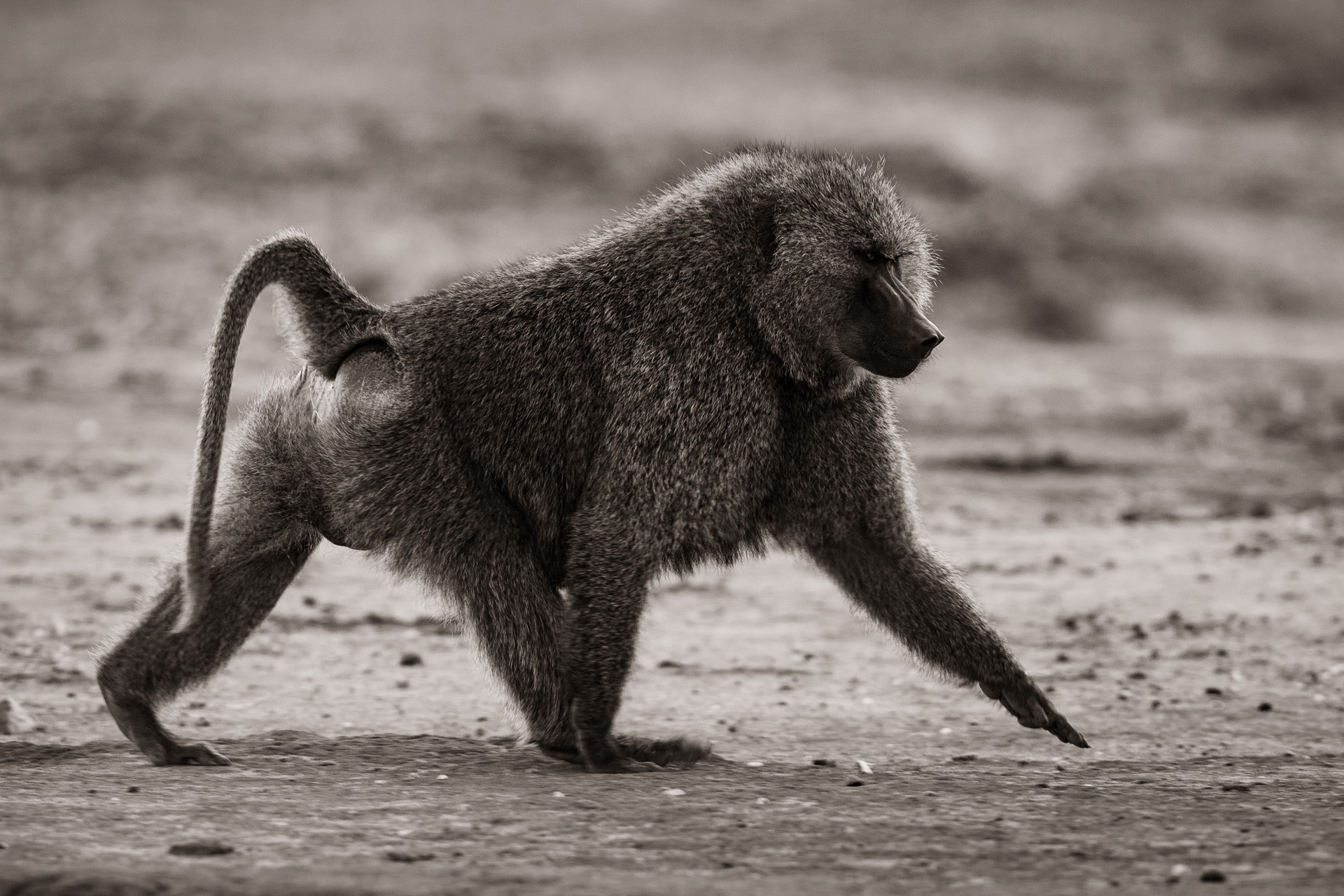
I love the confidence and the swagger of a big male baboon. [f 6.3, 1/160 ISO 500]

Daylight breaks in the Maasai Mara – the iconic standalone trees provide the perfect subjects. [f 4.0, 1/800 ISO 640]
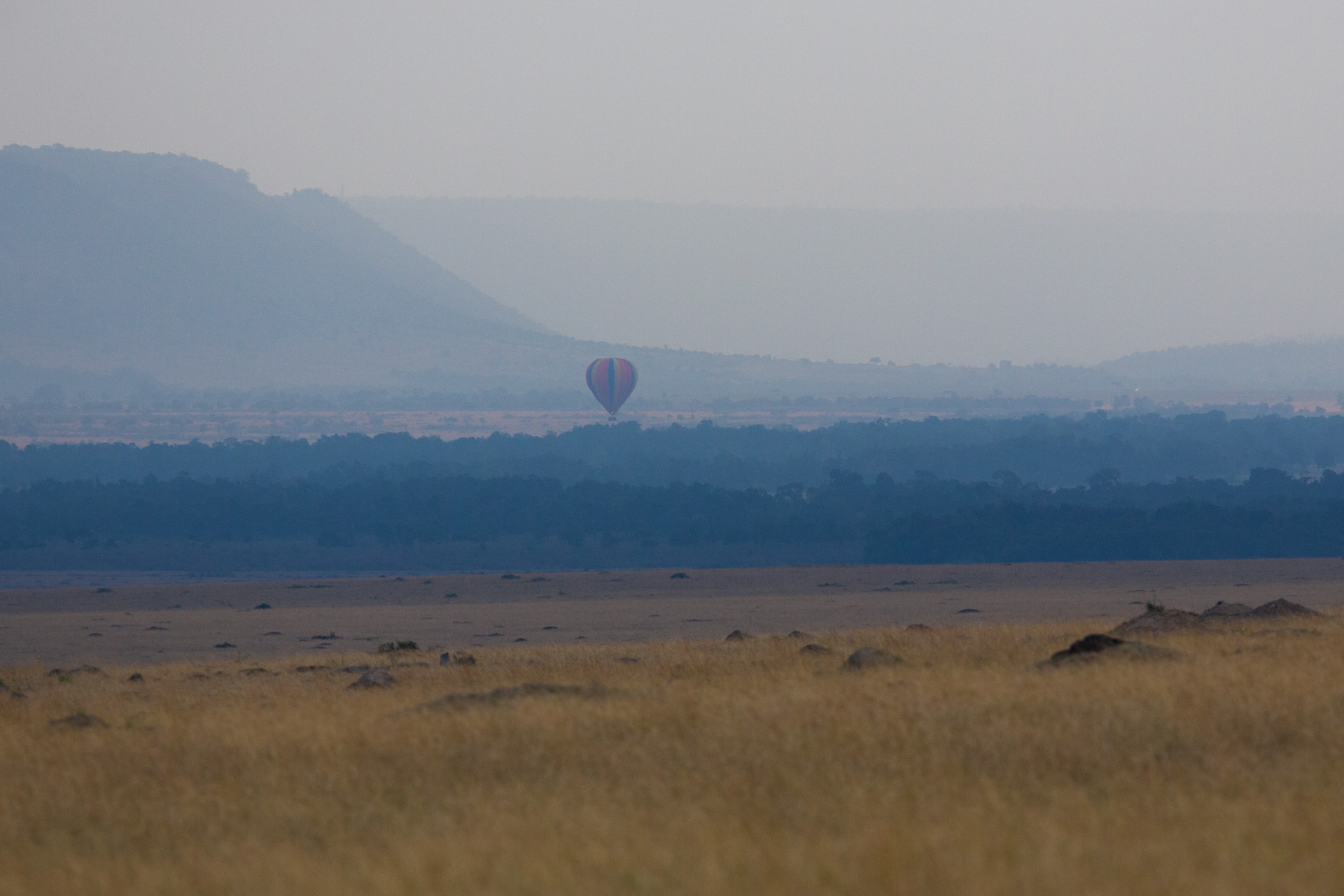
Mornings have so many different tones and feels. This particular morning had a misty blue hint. [f 5.0, 1/800 ISO 640]
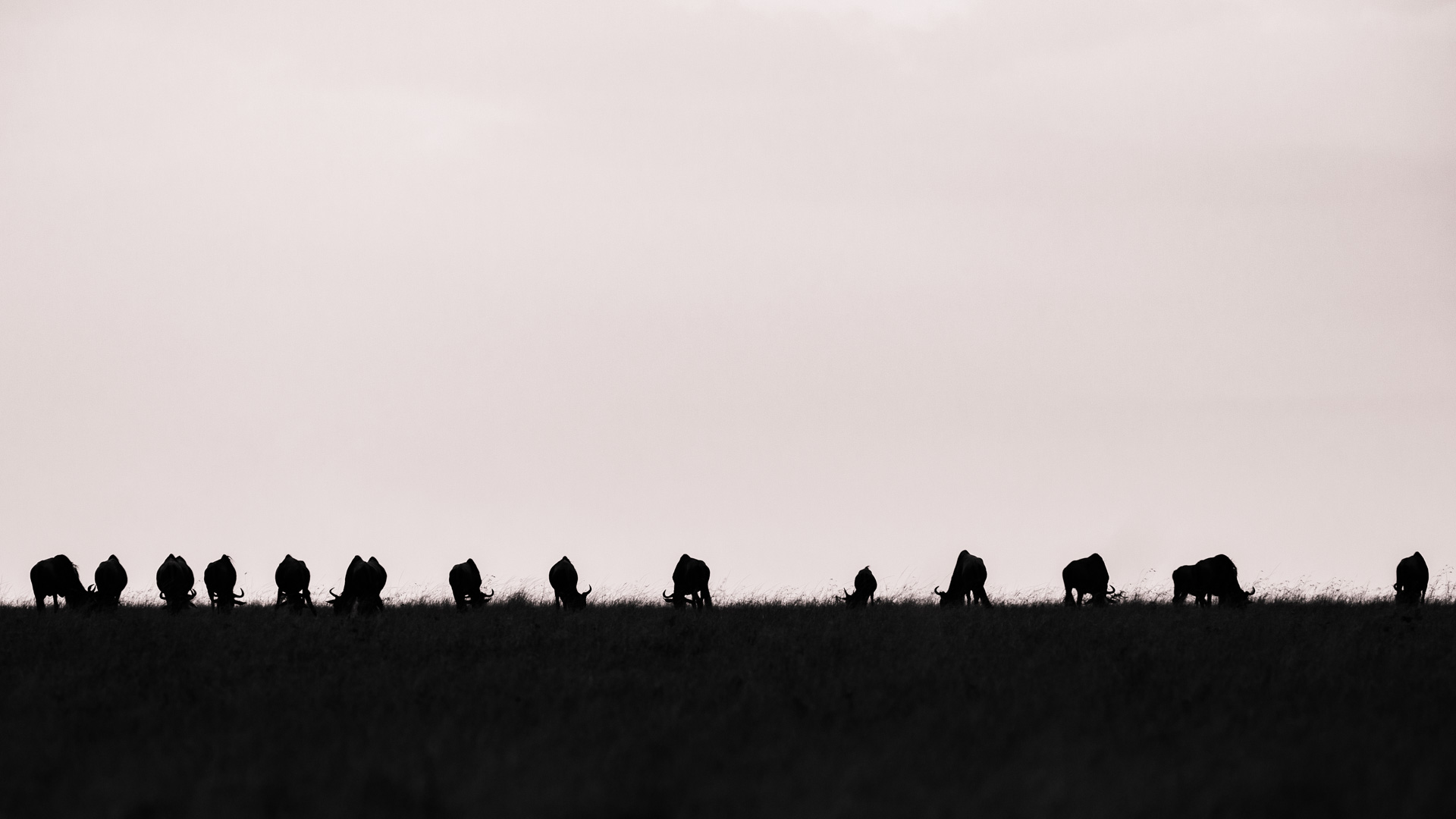
Like soldiers marching to battle – well, maybe not. Only after I took this photograph did I realise that not a single wildebeest had its head up. The grass must be good. [f 5.0, 1/2000 ISO 640]
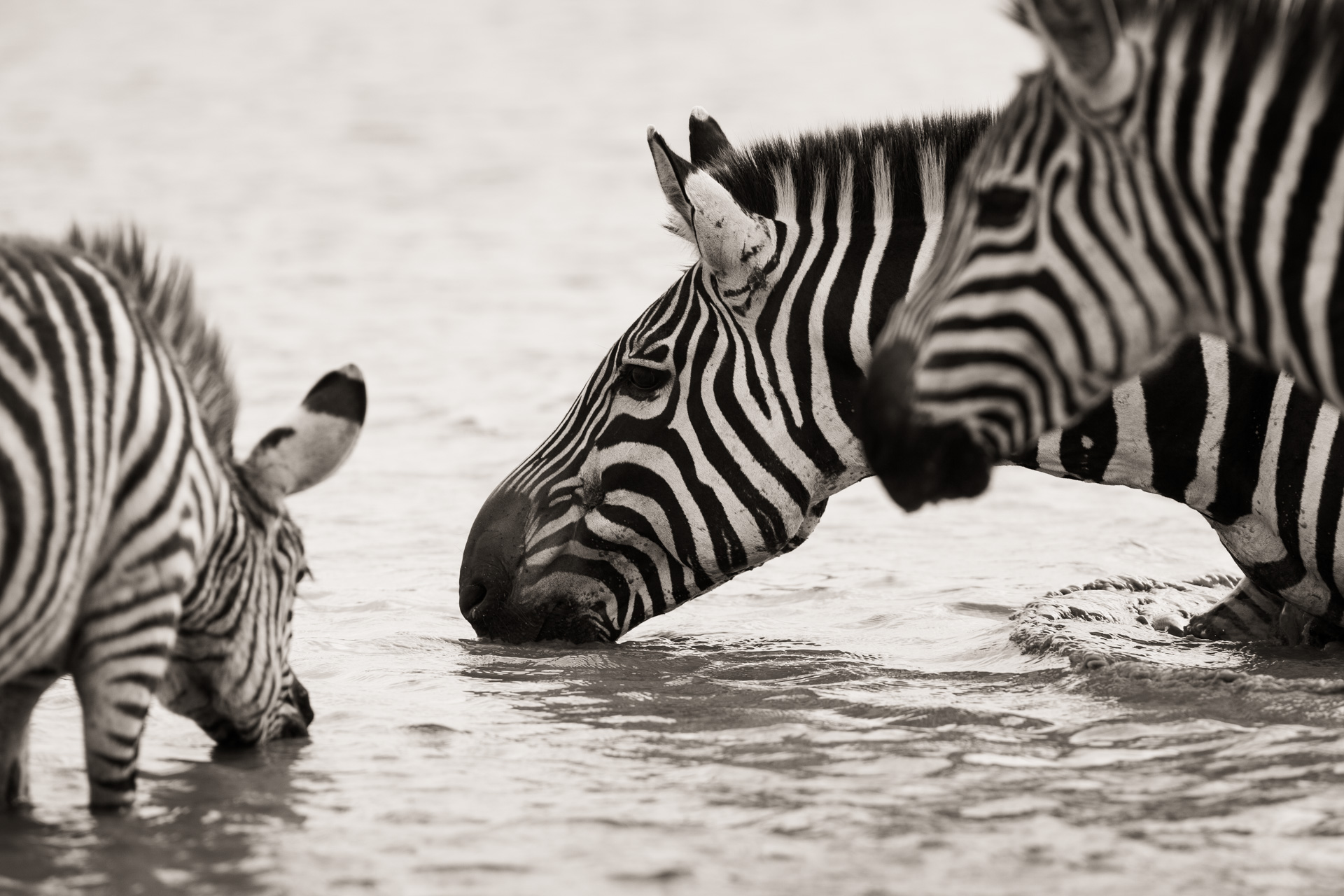
As a wildlife photographer in the Mara I often switch to black and white in the middle of the day when the light gets harsh, especially with zebra. [f 5.6, 1/640 ISO 250, +0.67]
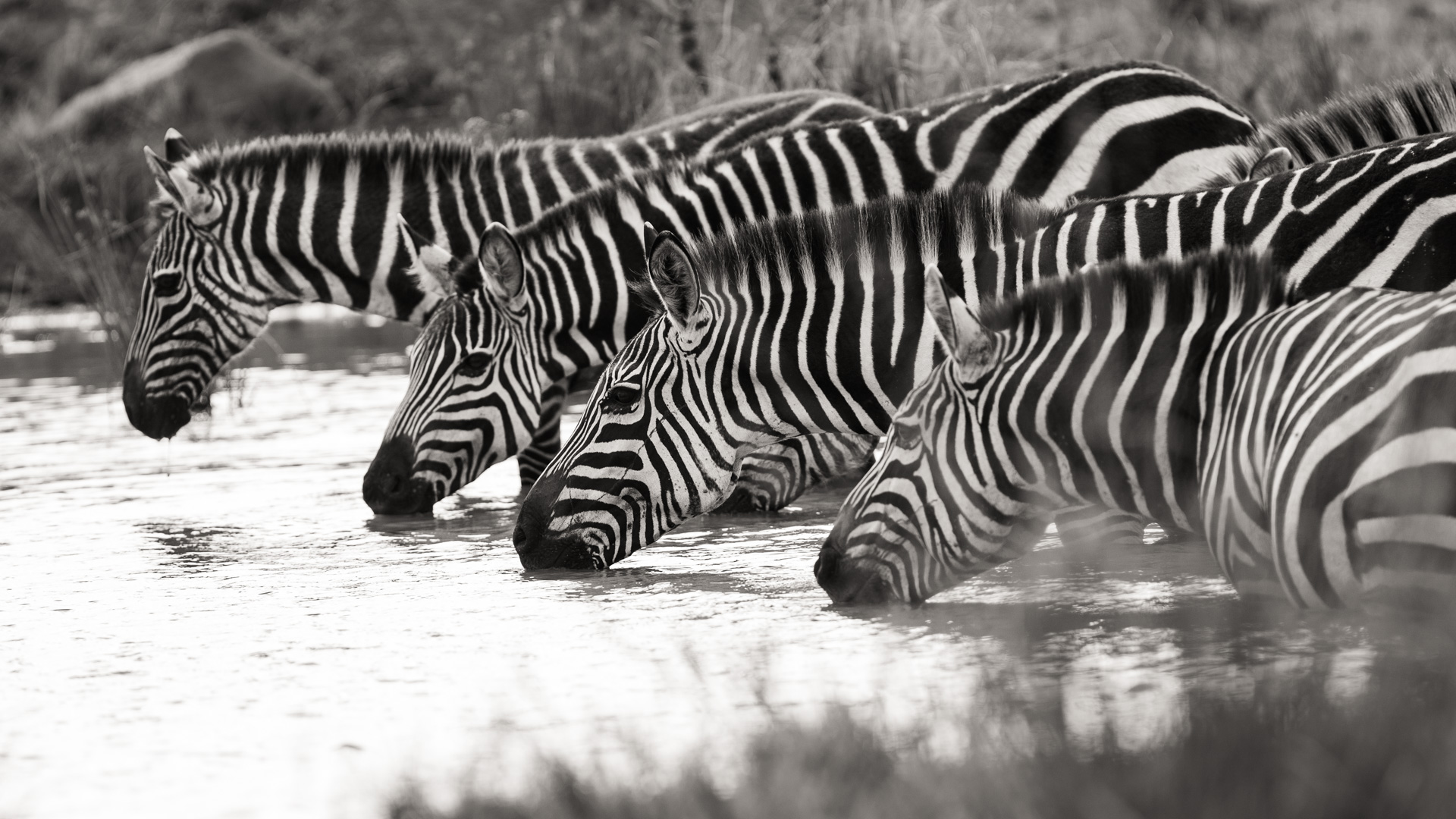
Hoping that they line up perfectly. [f 5.6, 1/400 ISO 250, +0.67]
This Week a Year Ago

Last year baby topi could be seen across the grasslands. Like clockwork the same has held true this year. Isn’t it incredible that exactly the same week each year, these animals know its time to give birth. The theory is that by all dropping their young at the same time there is an abundance of food for predators, and so the odds that your baby survives increase. [f 5.0, 1/1000, ISO 100]
TAGGED WITH: Wildlife, Photography, Great Migration, Wildlife Photography, Photographic Safari, the great migration, This Week At Angama, Angama



COMMENTS (2)
Francis C Bagbey
September 30, 2019Fantastic photos! Thanks for all the back stories behind these photos. Always tough to see crocs win but as our guides tell us, it’s all part of the cycle of life in the Mara and Serengeti.
REPLYNicky Fitzgerald
October 1, 2019Thanks so much Francis – we greatly appreciate your support of our blog. Thank you so much.
REPLY